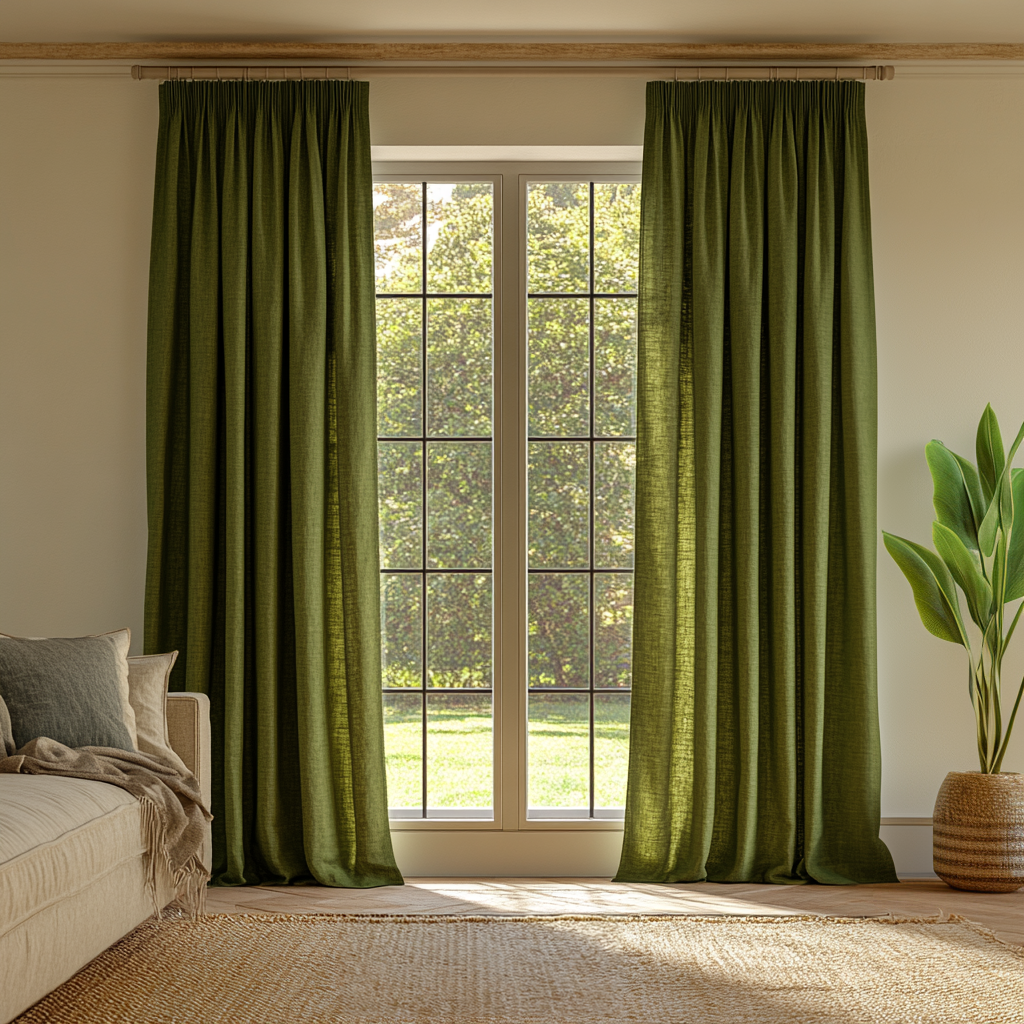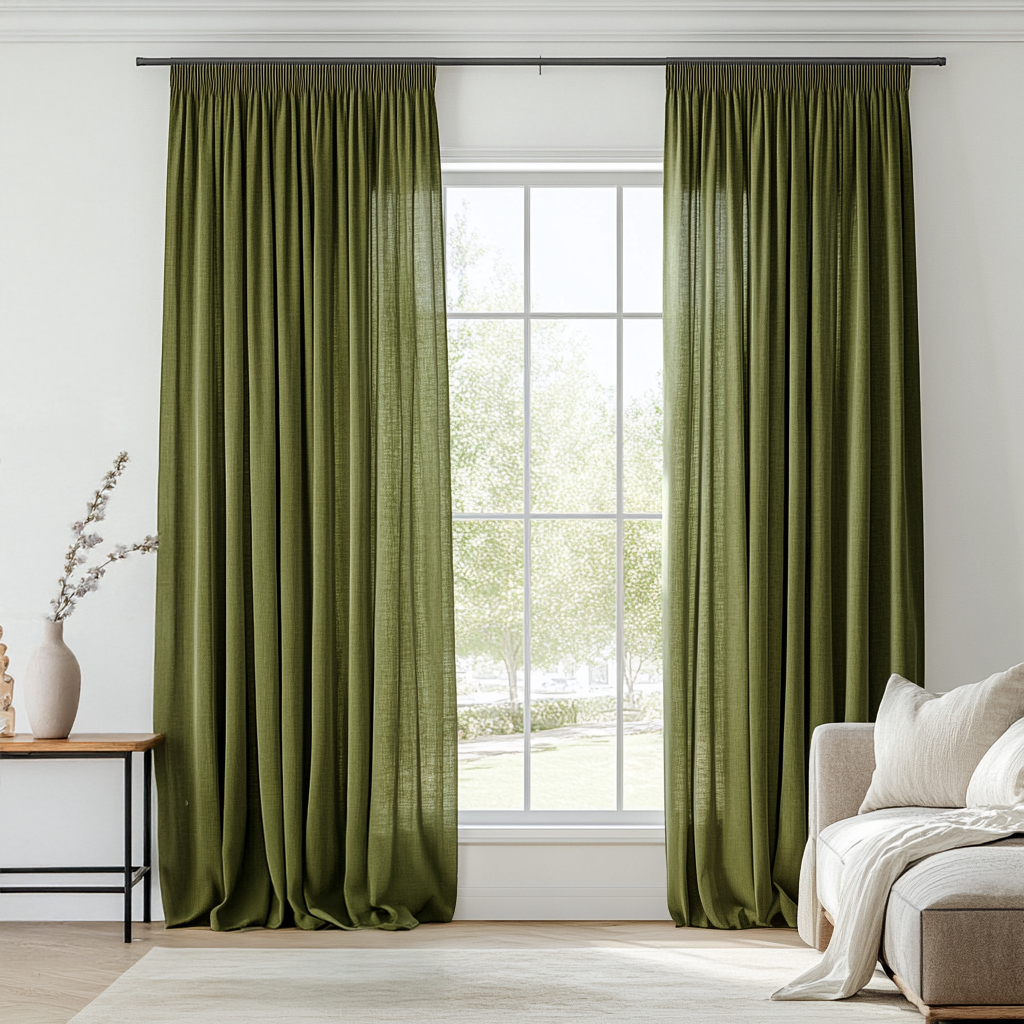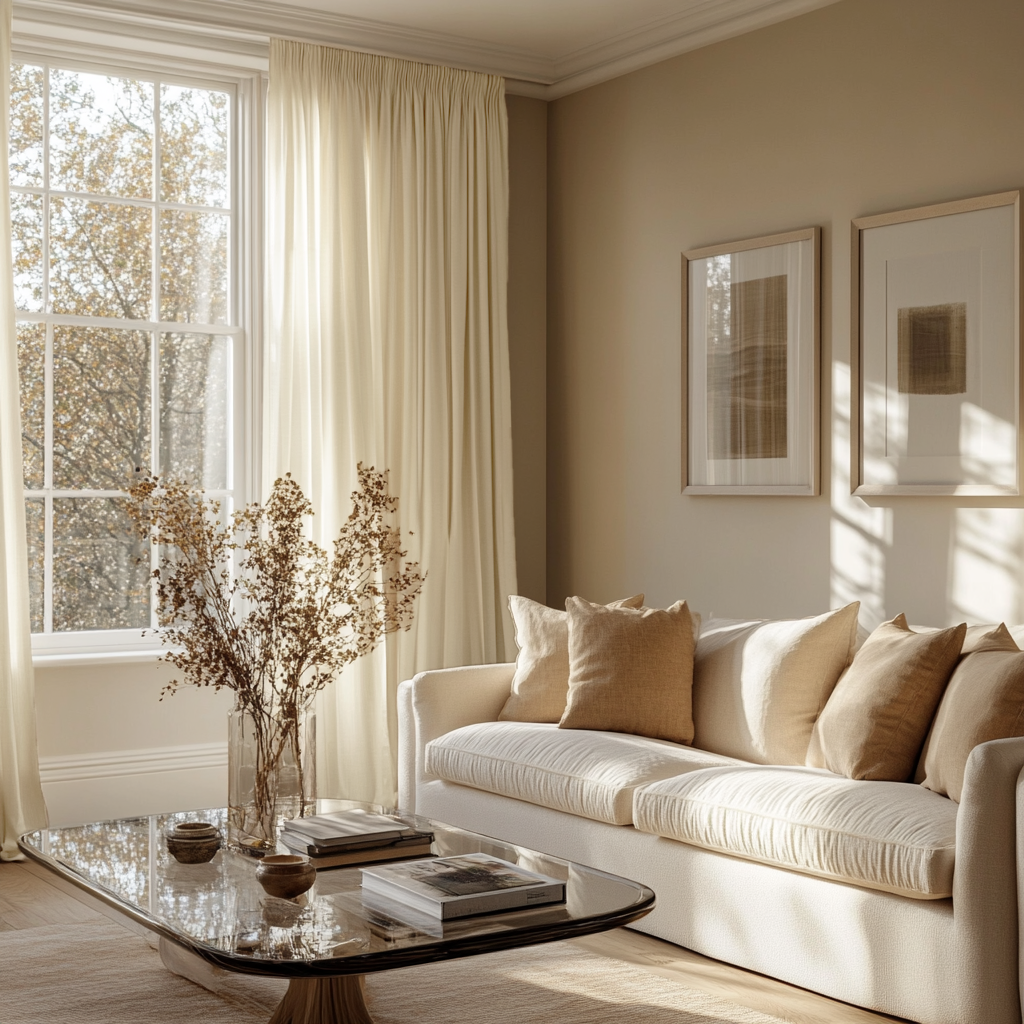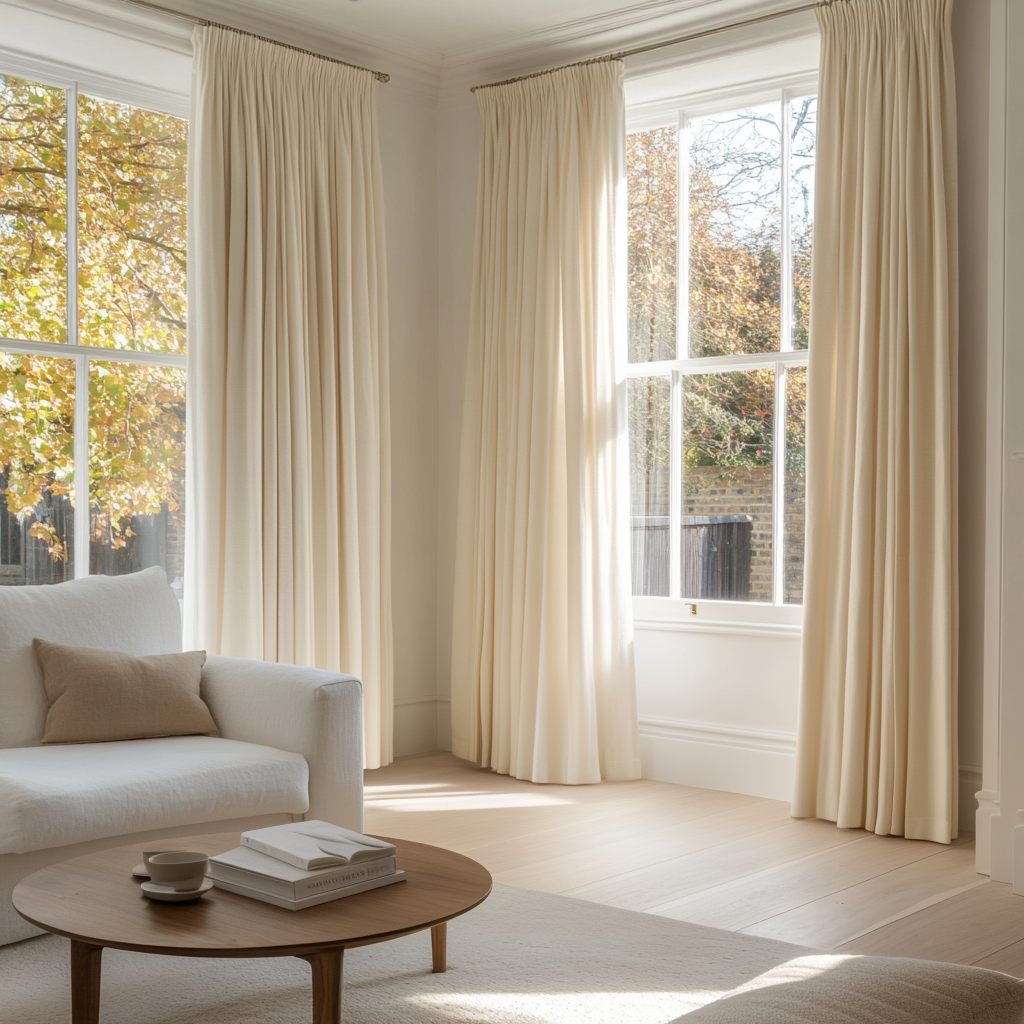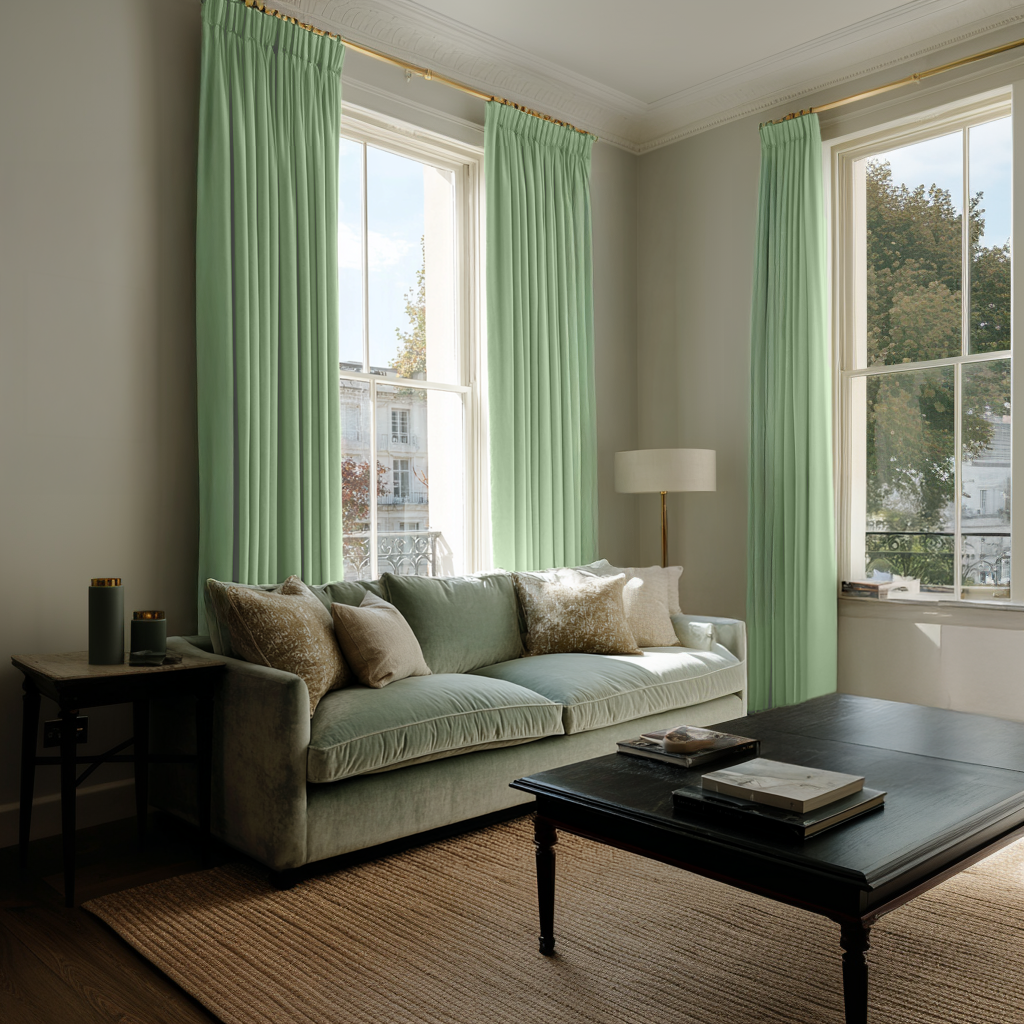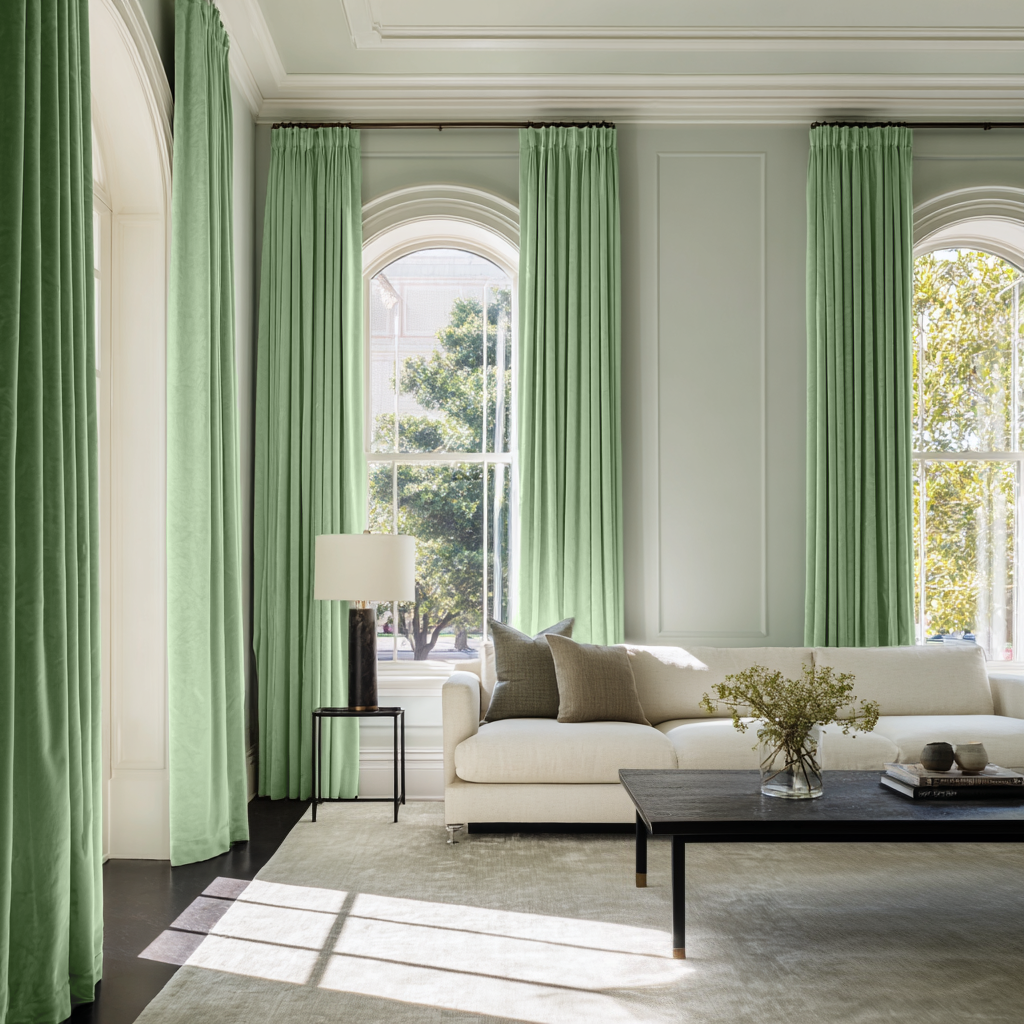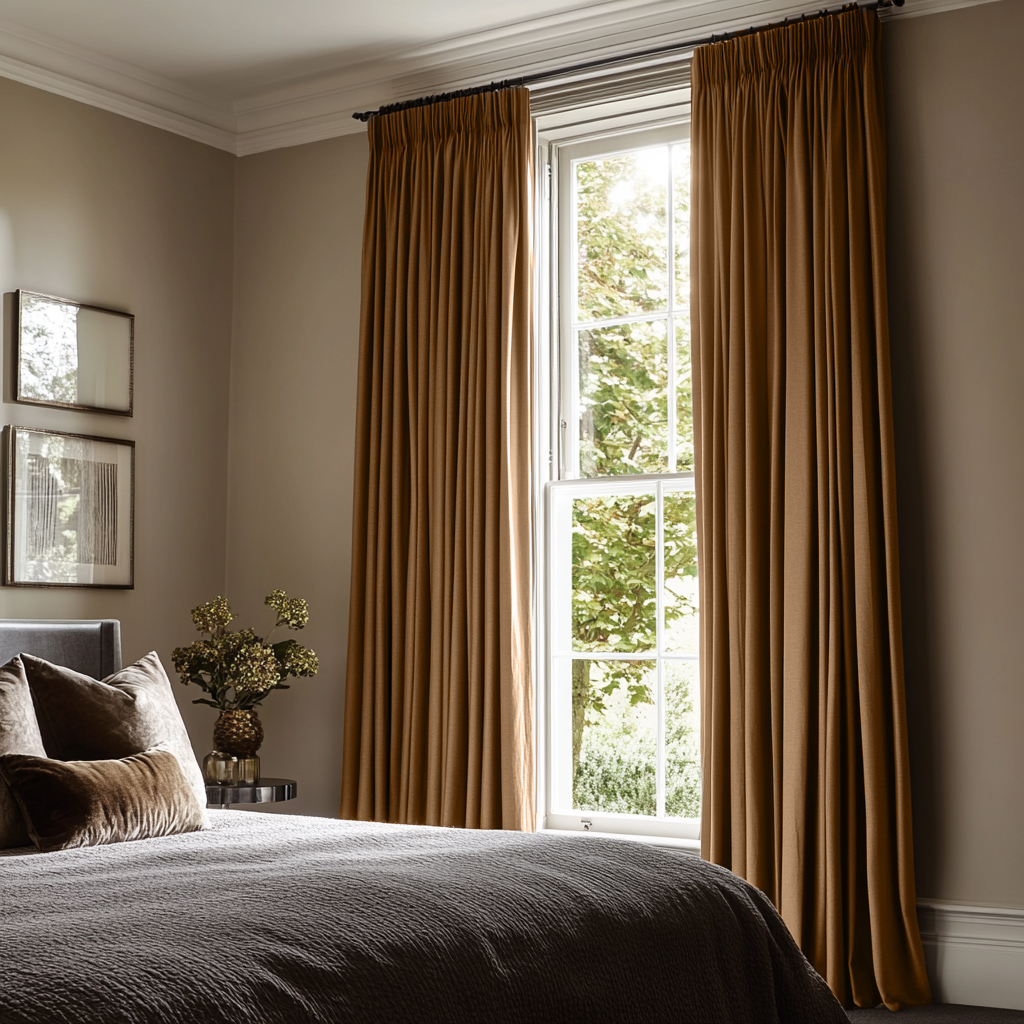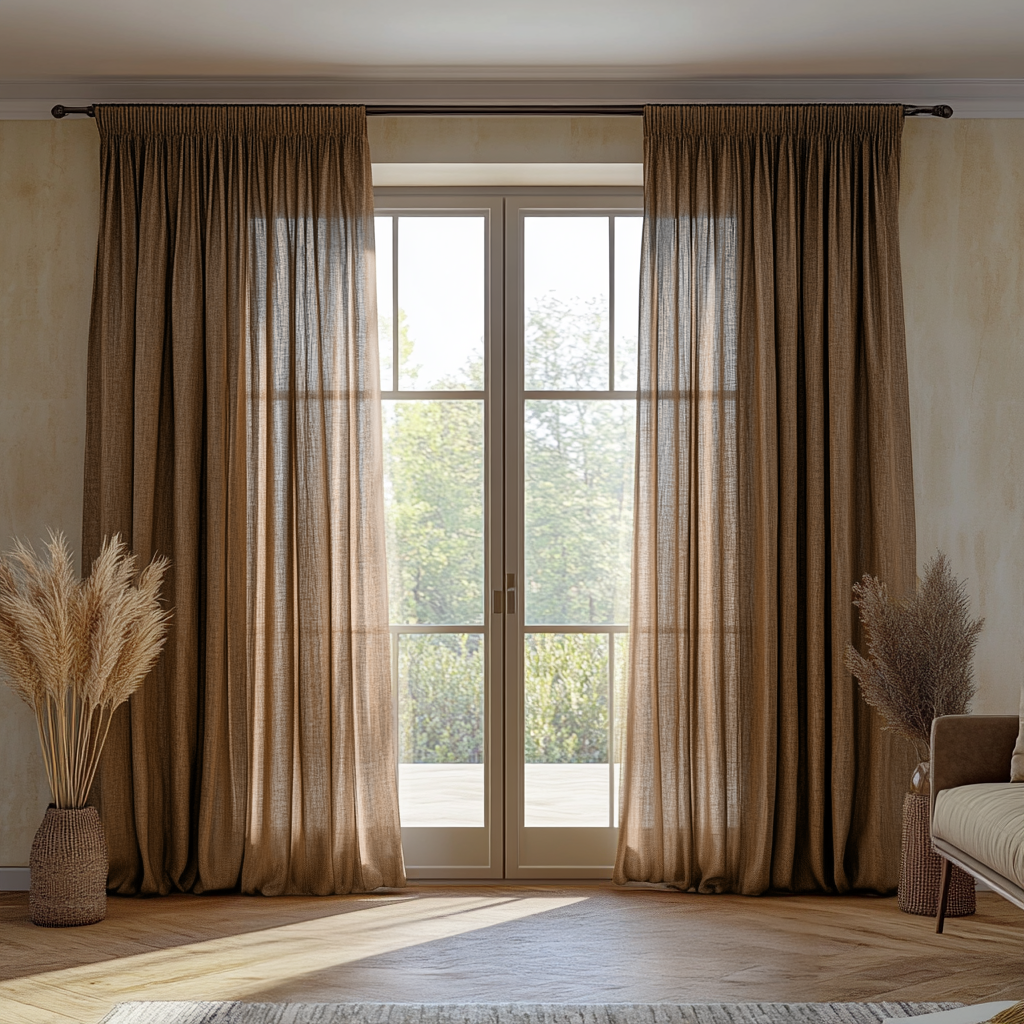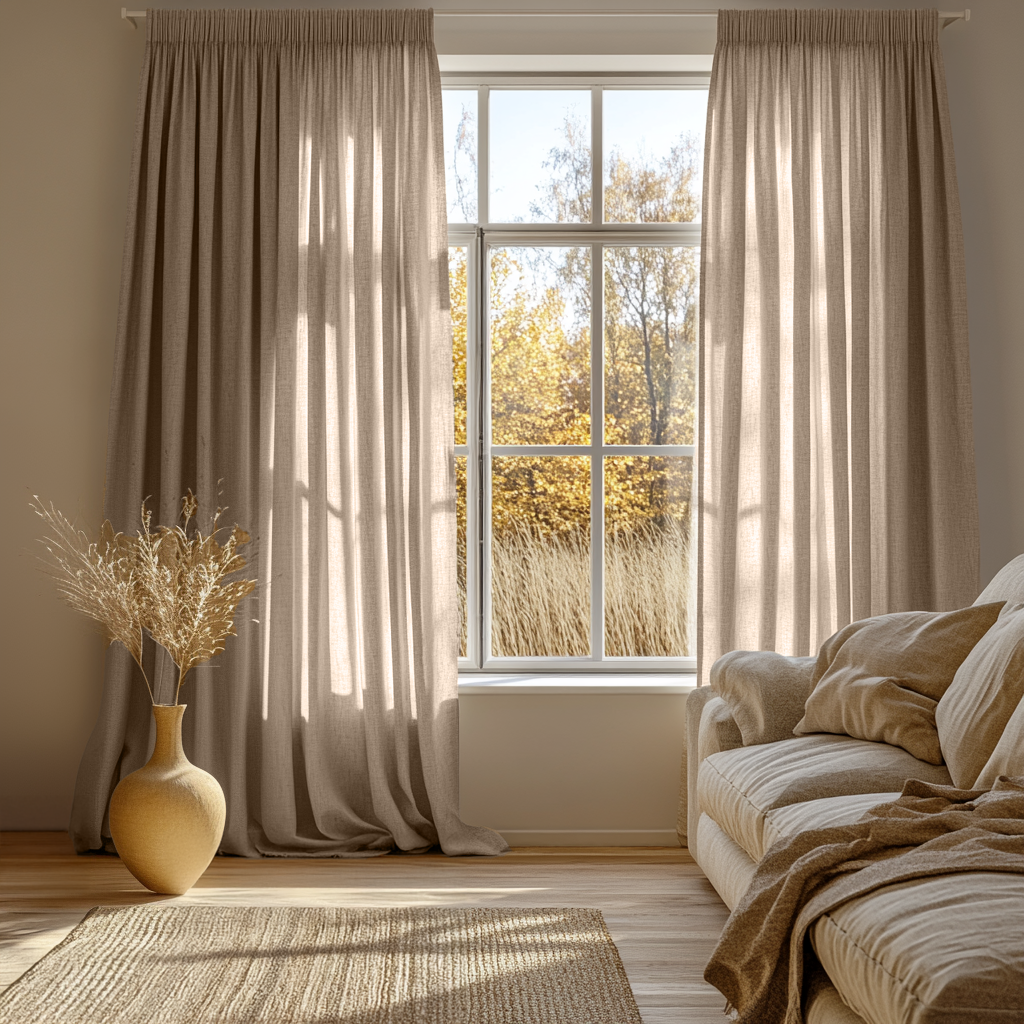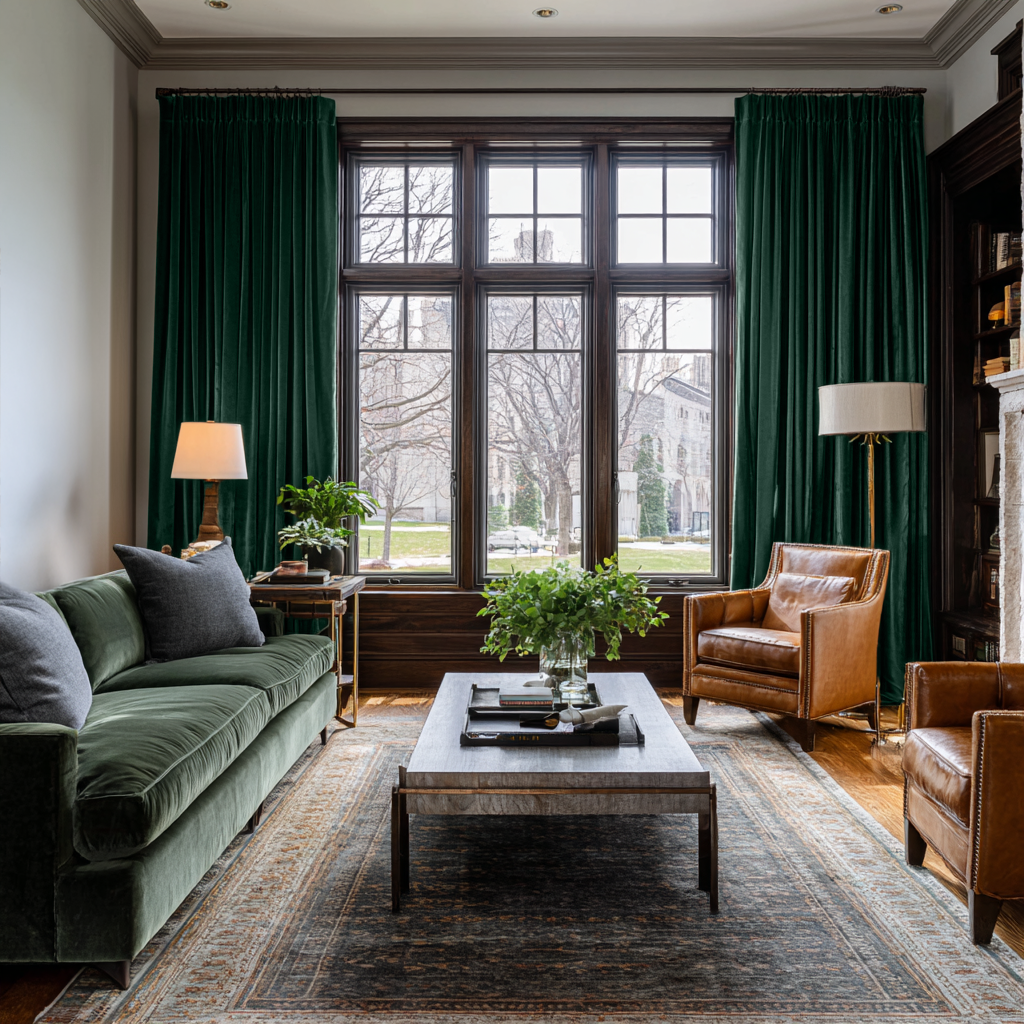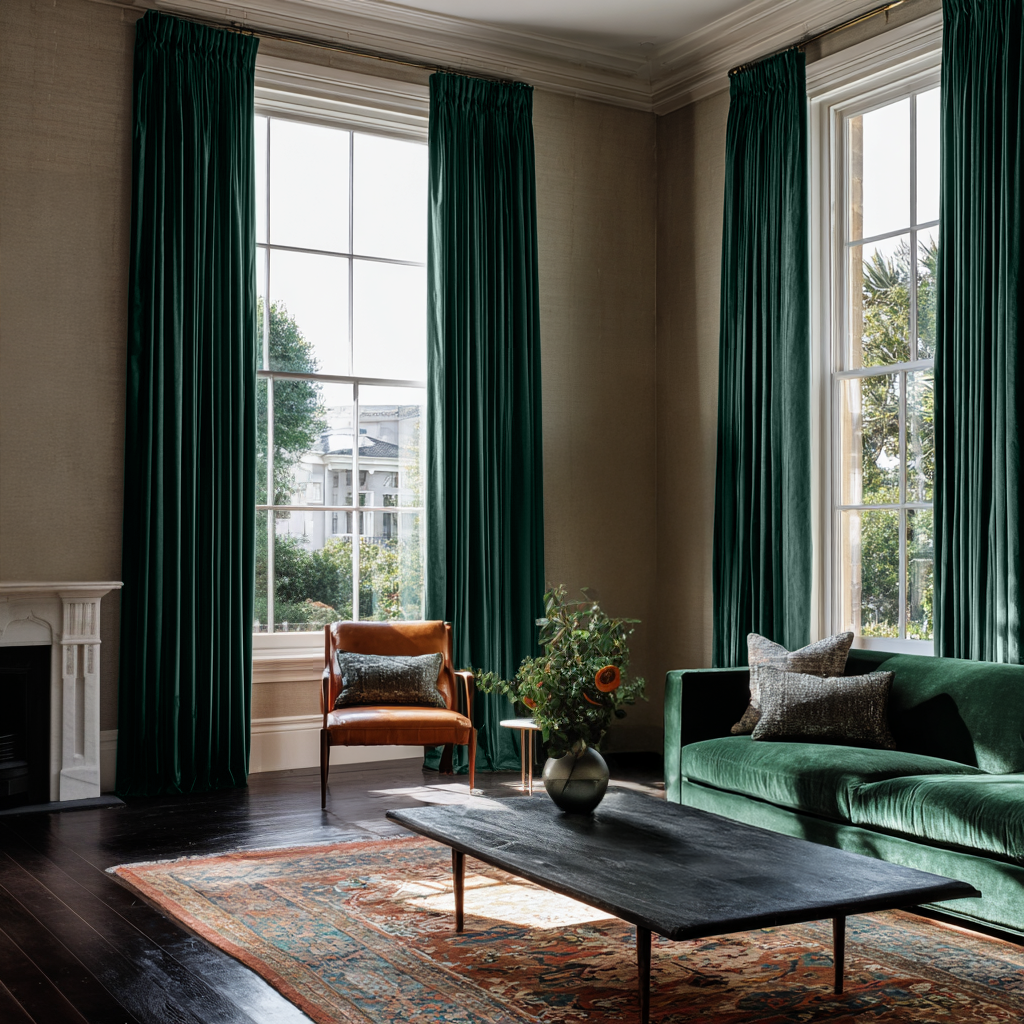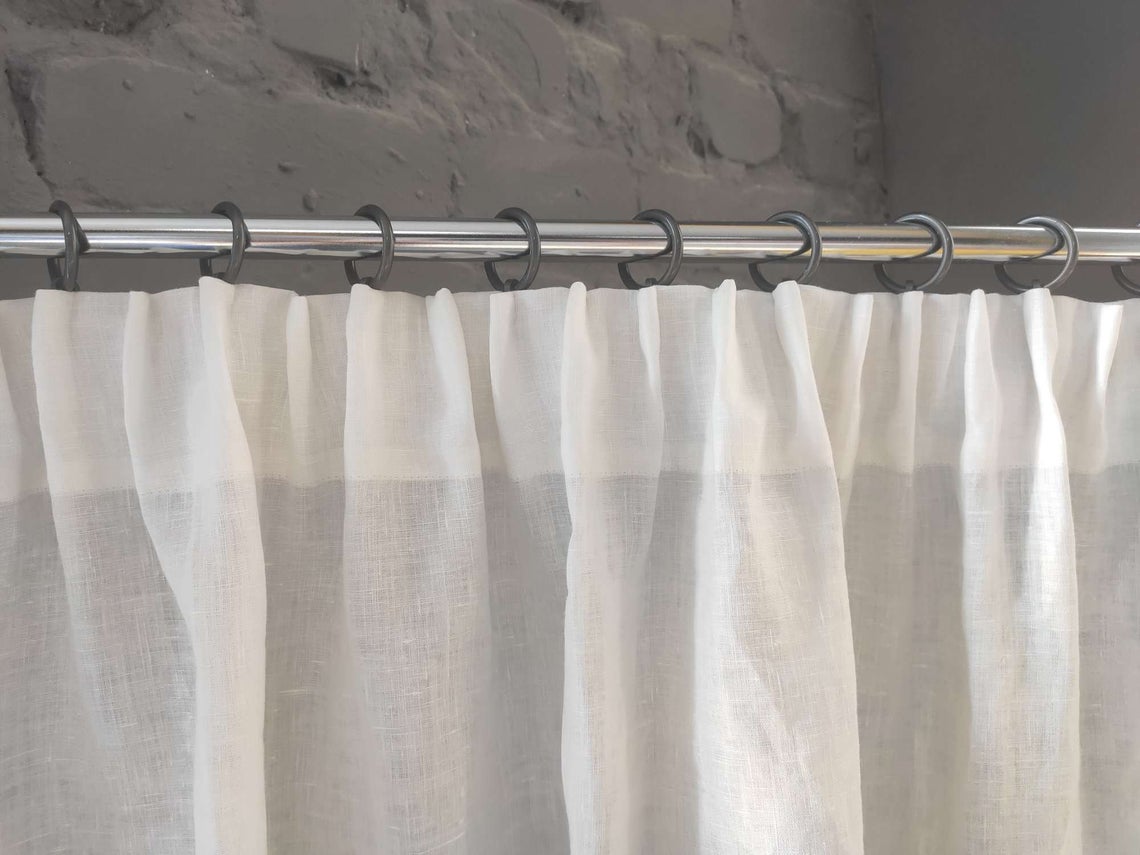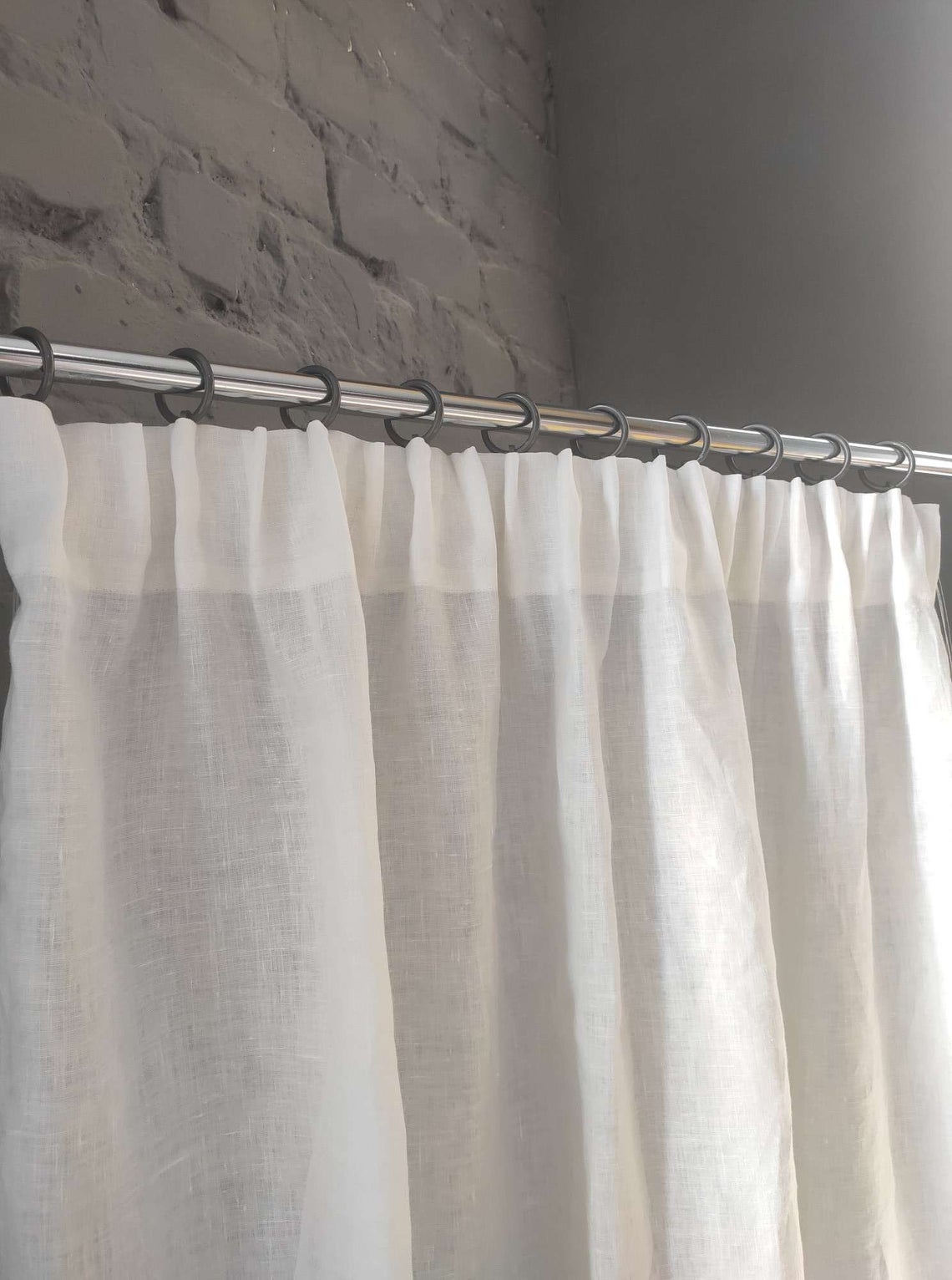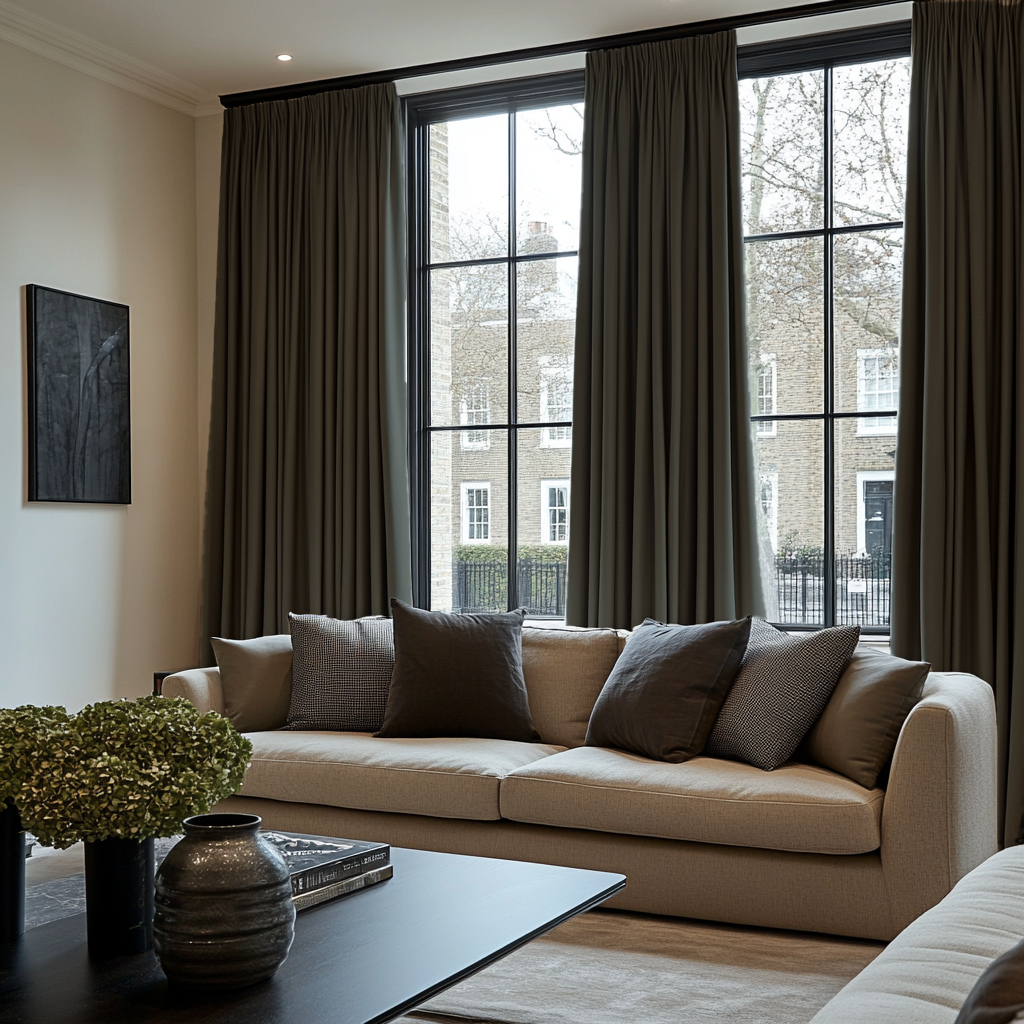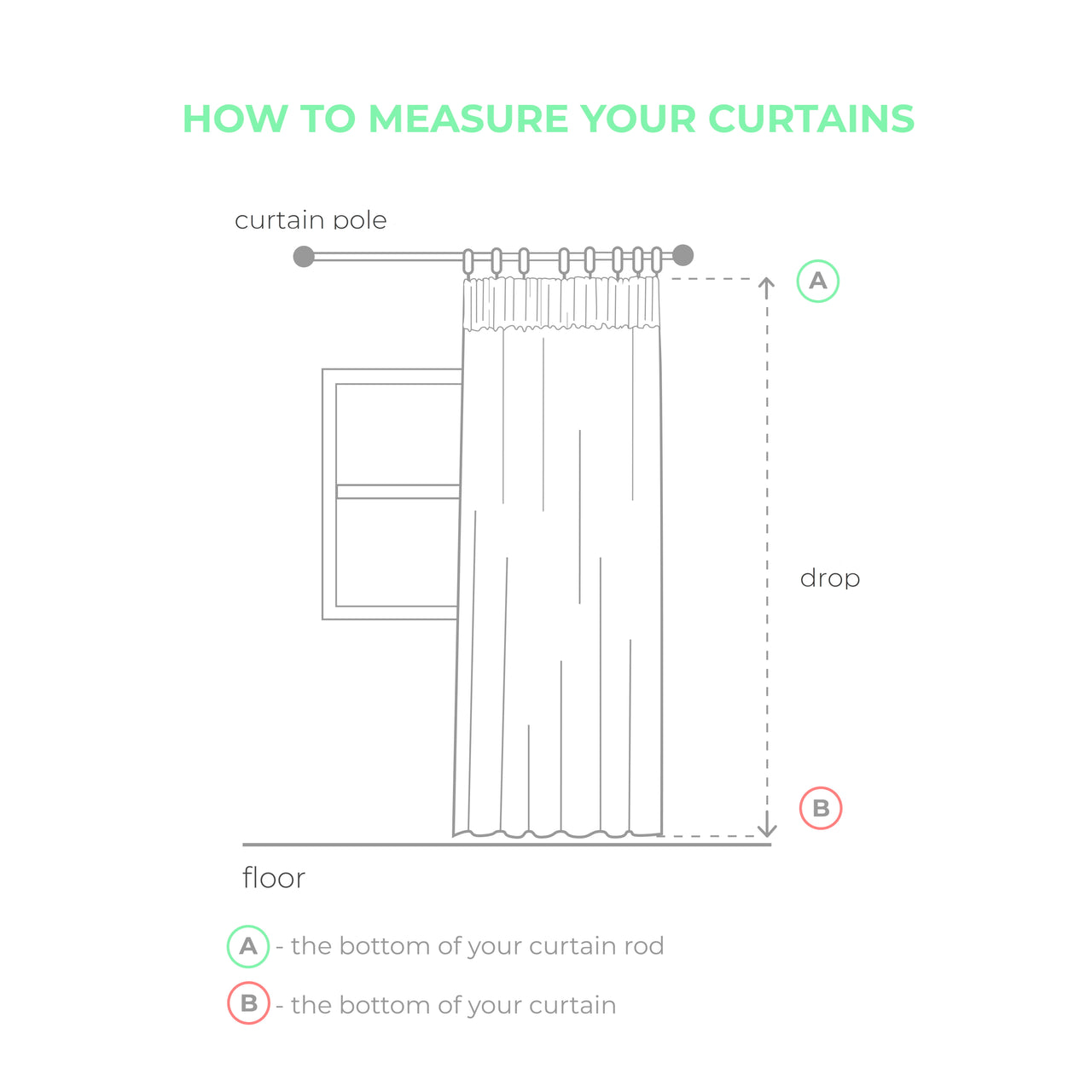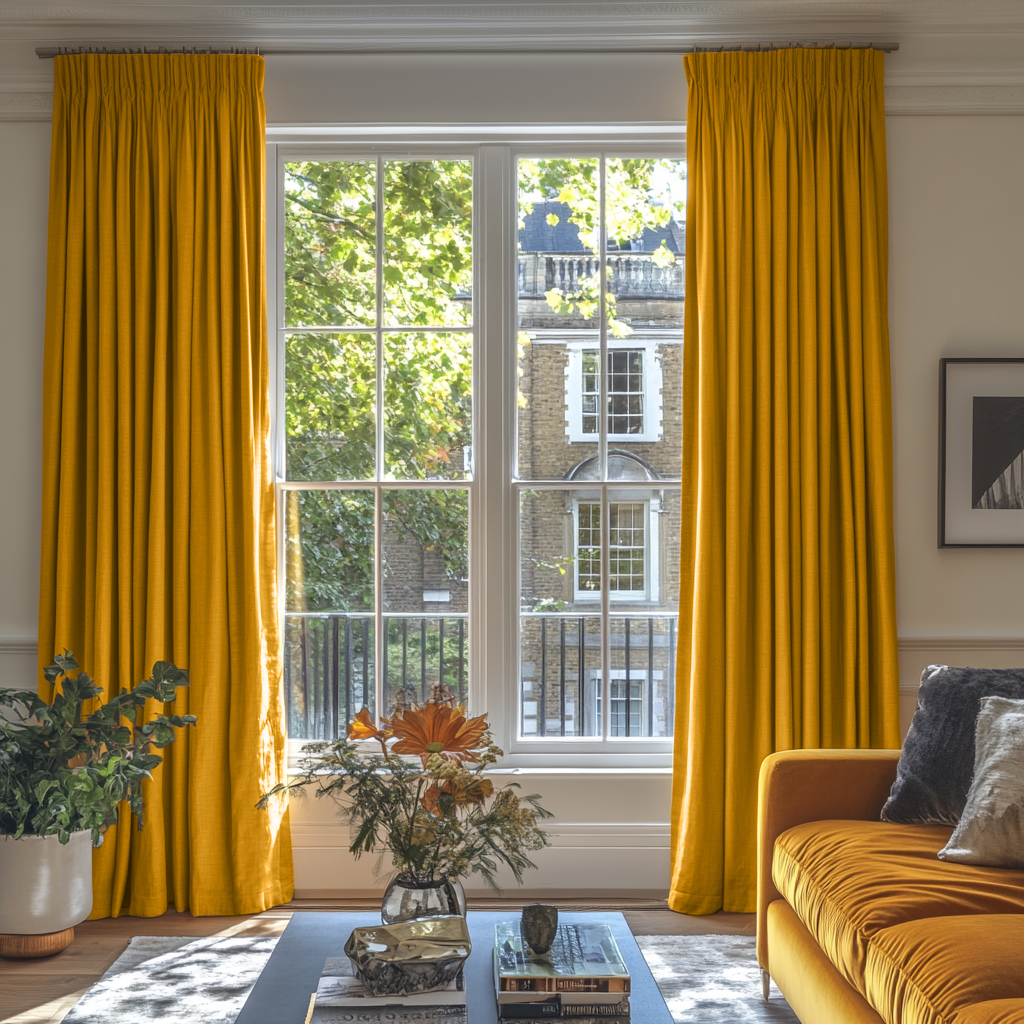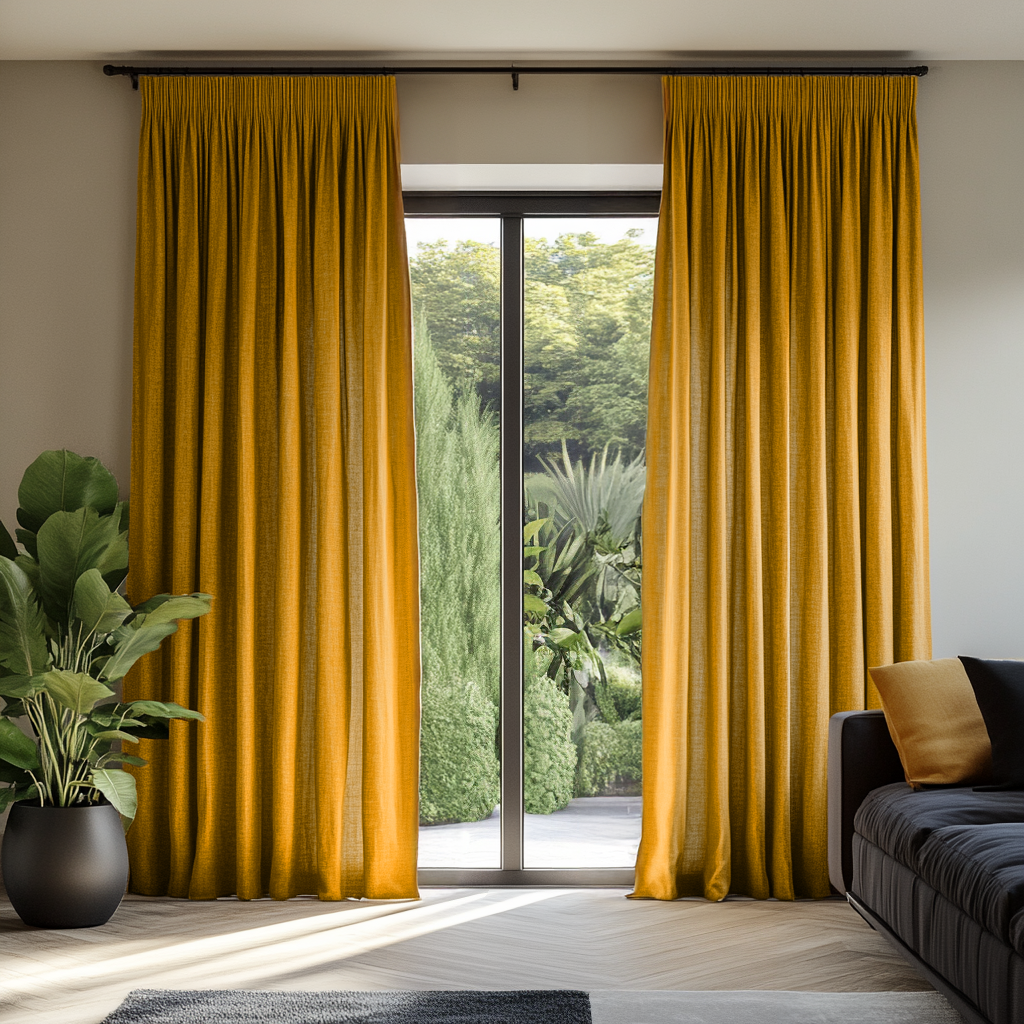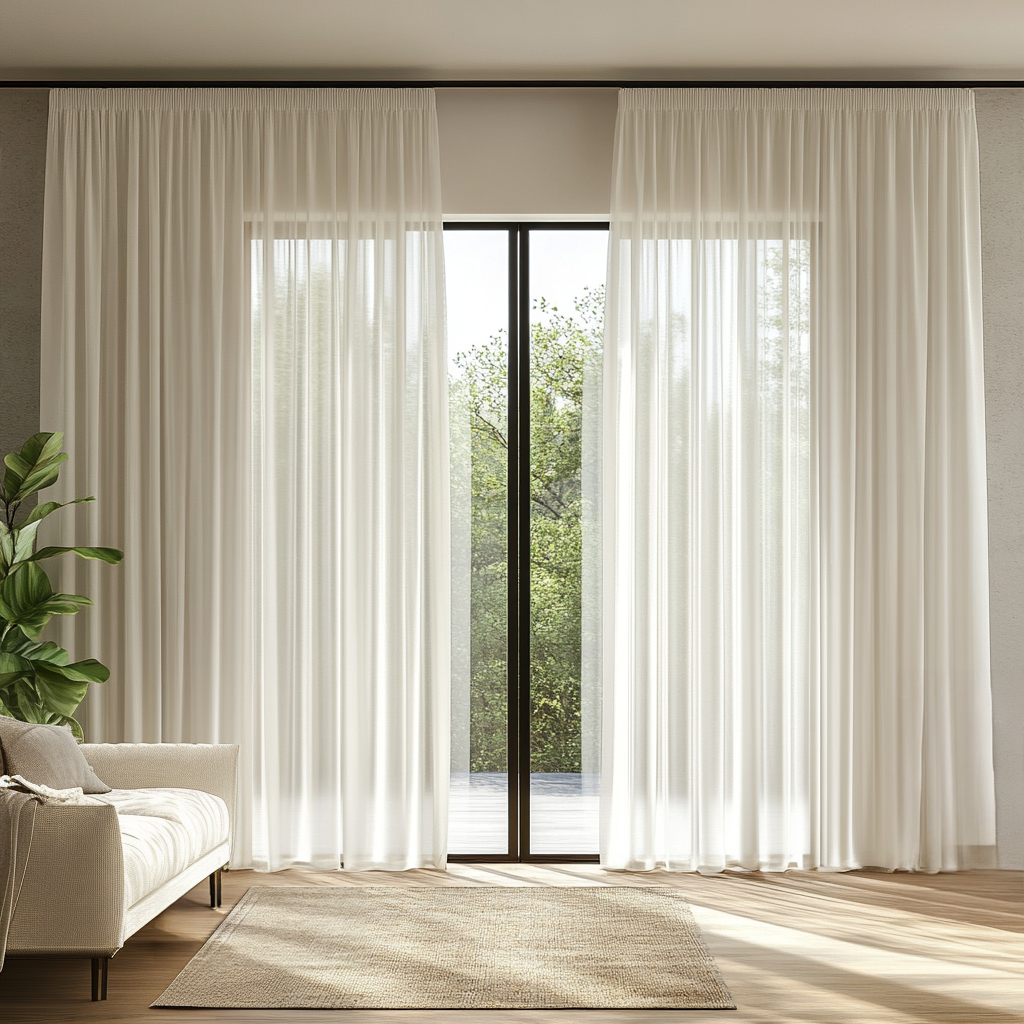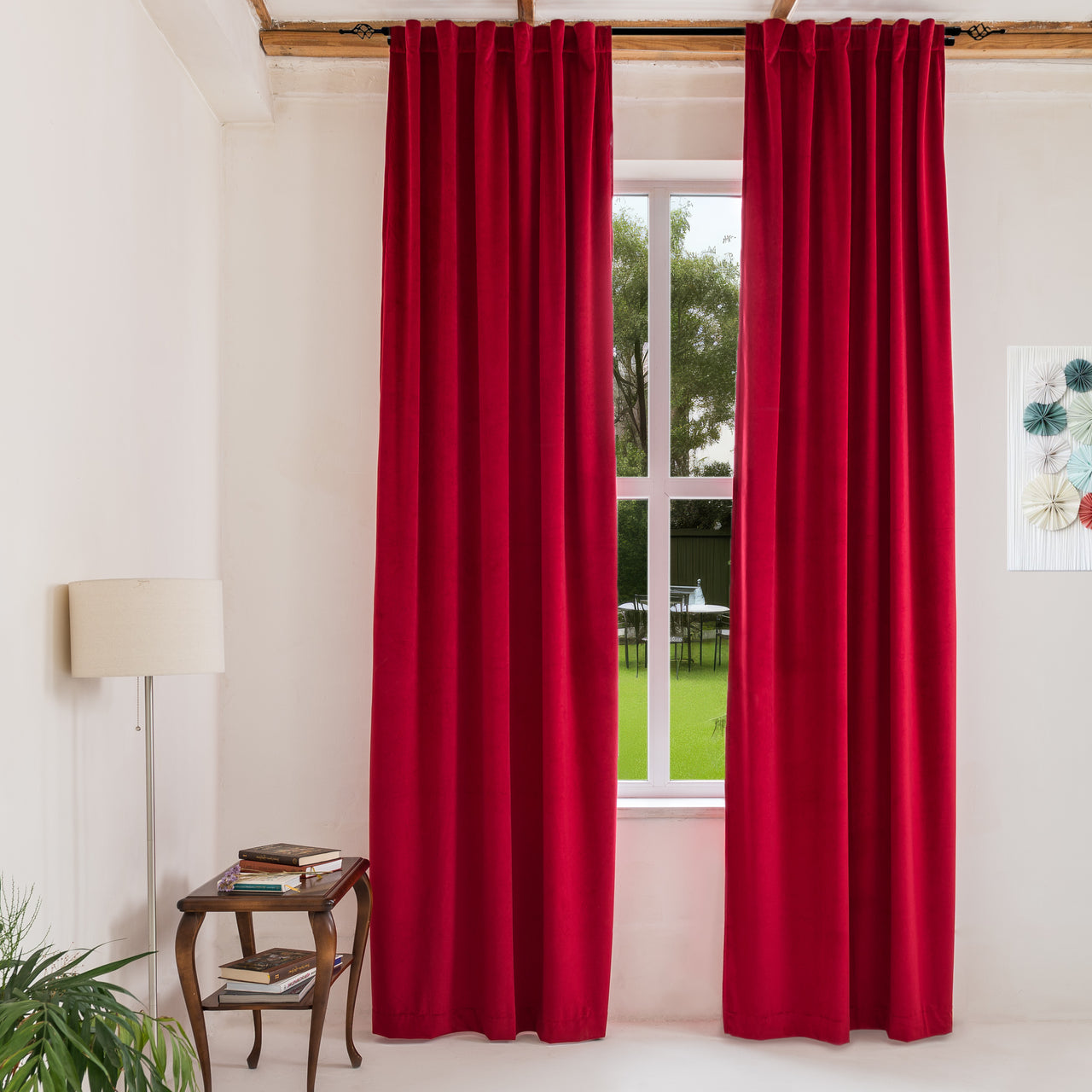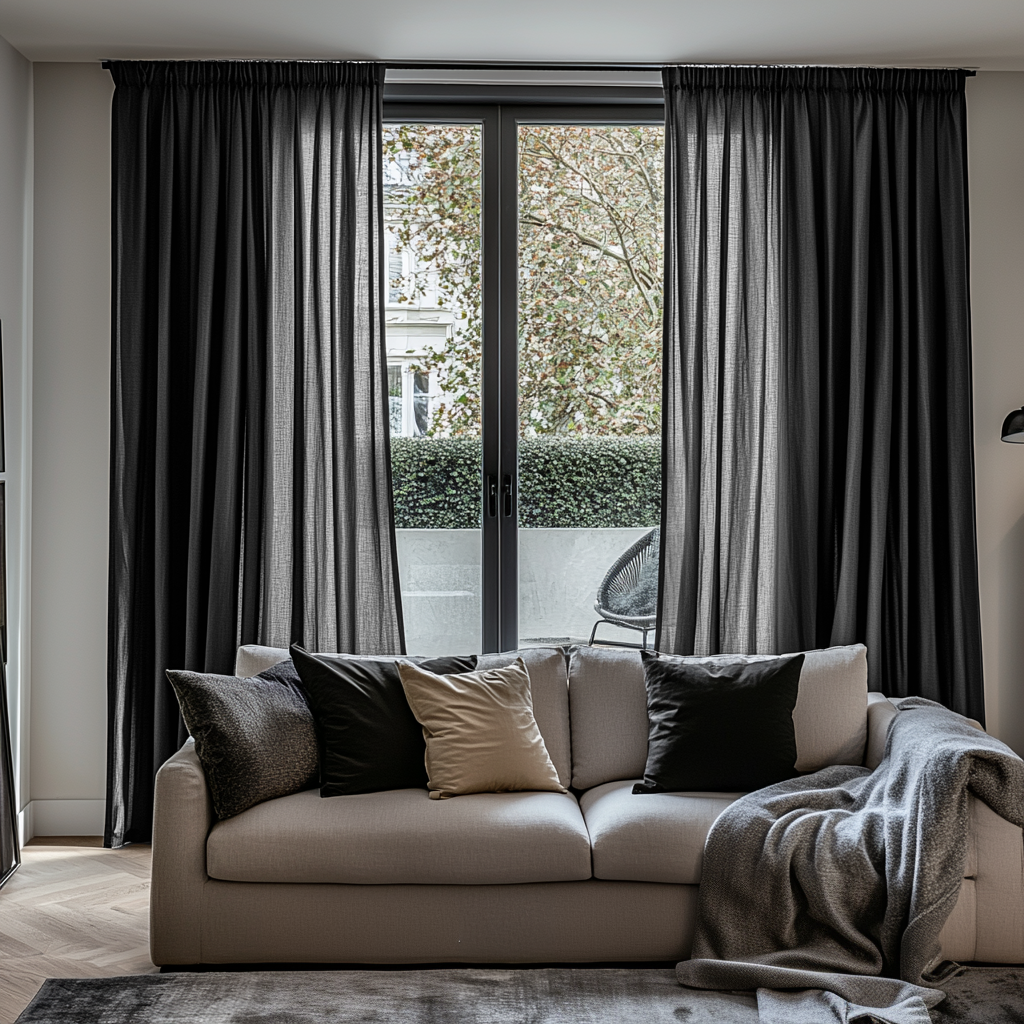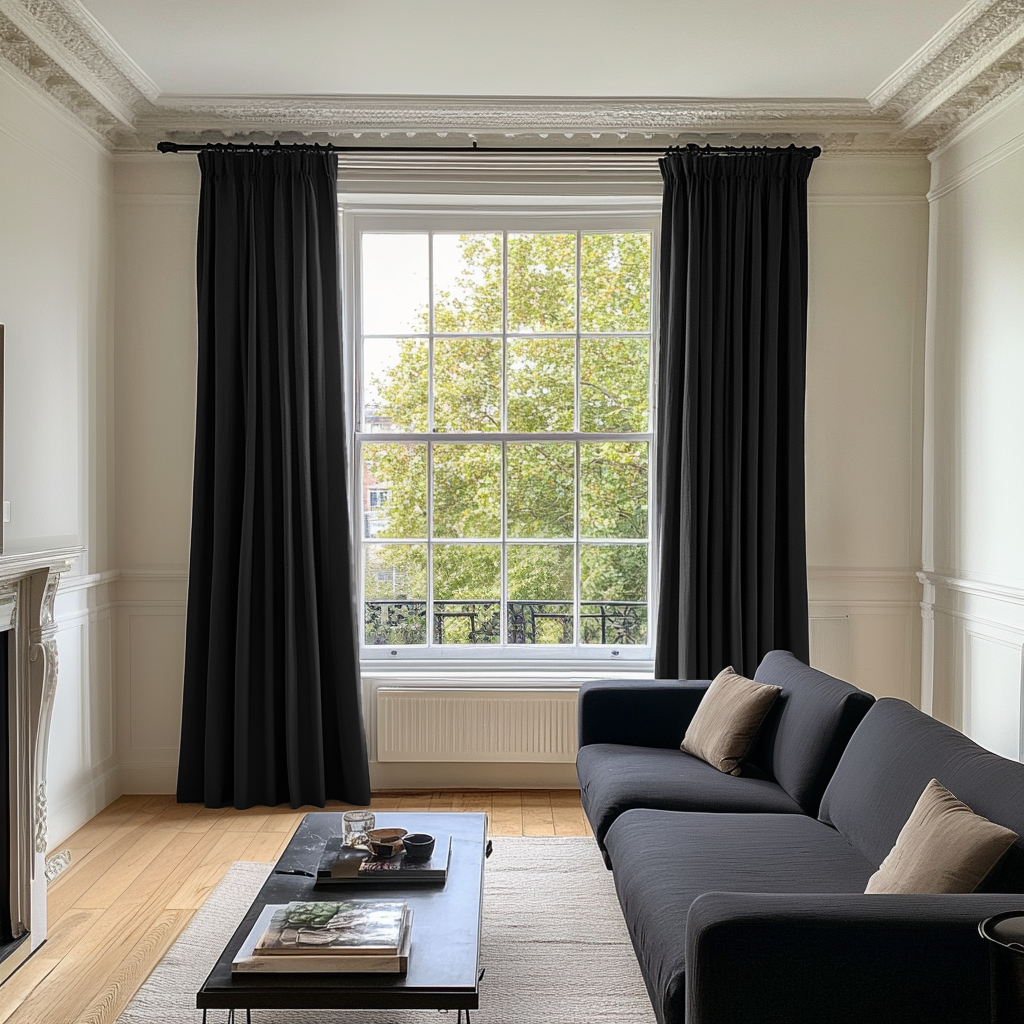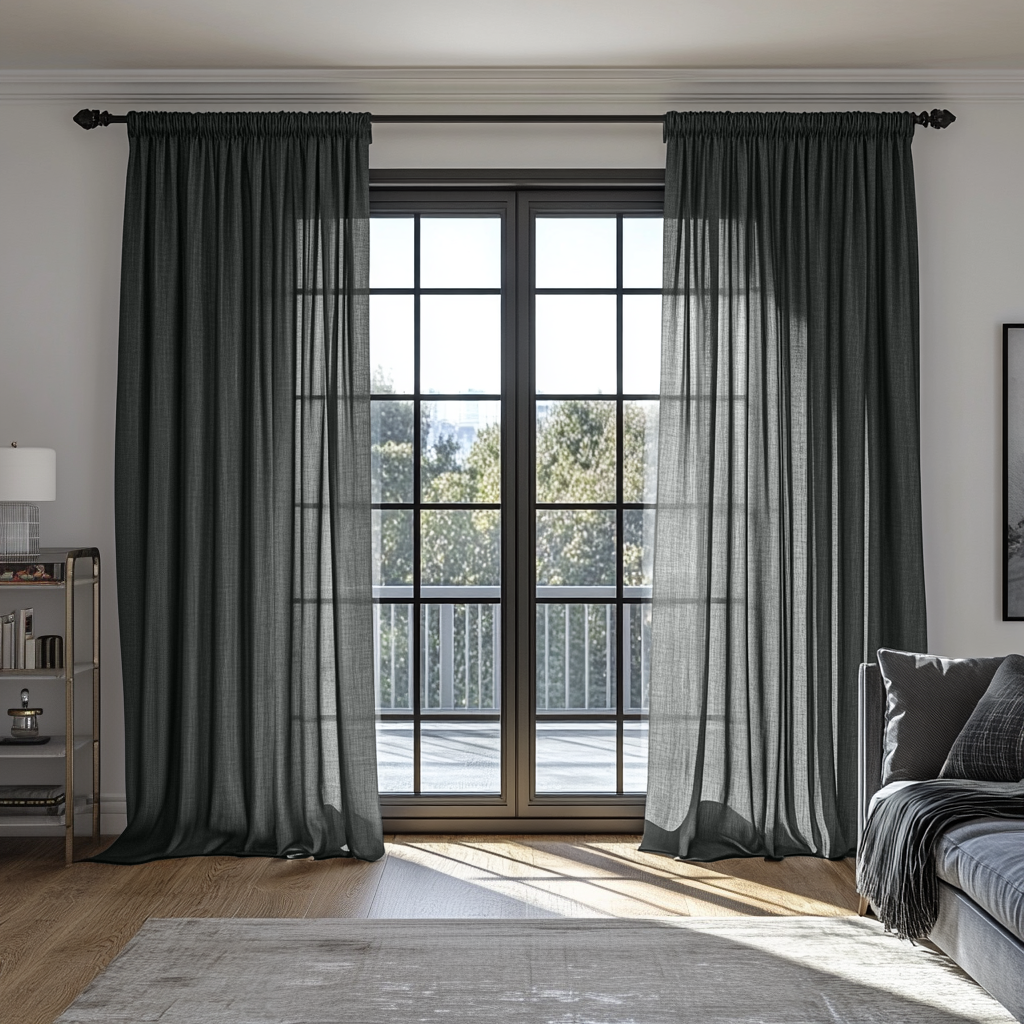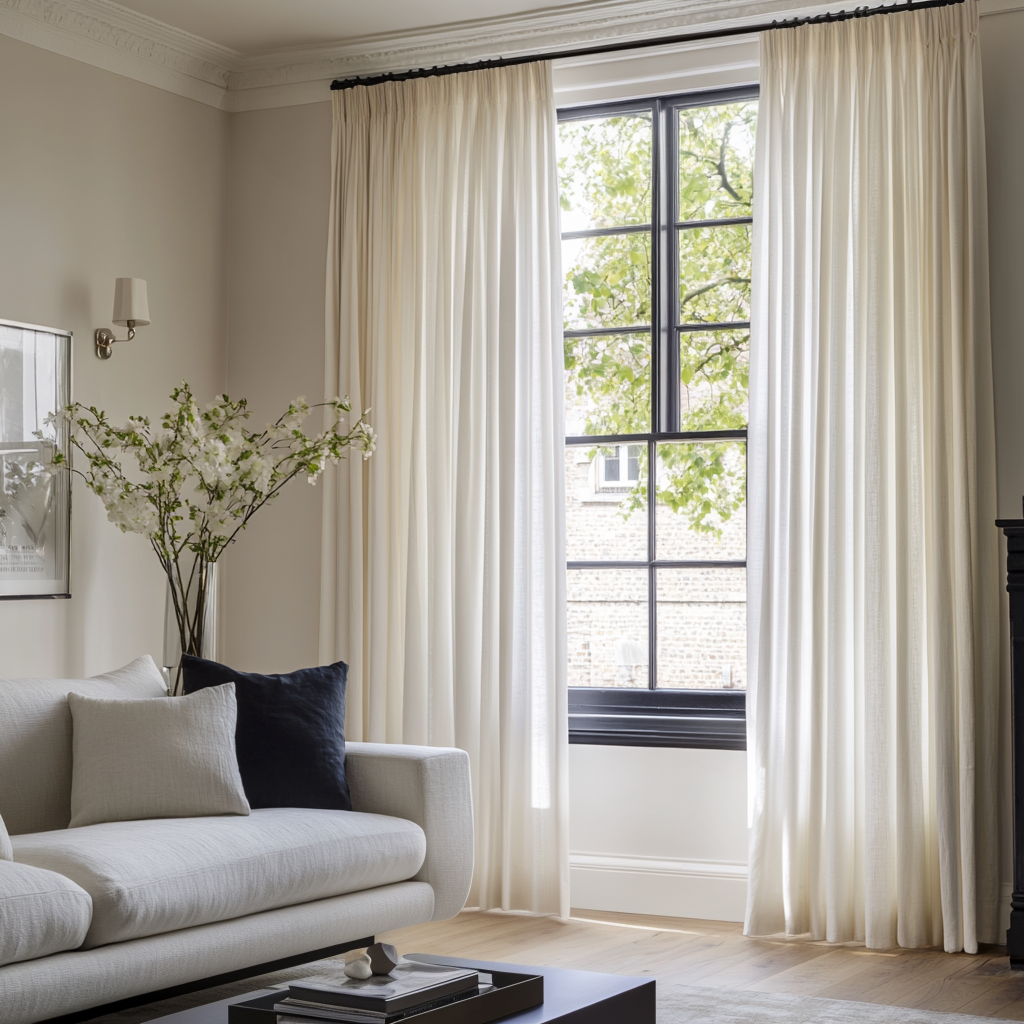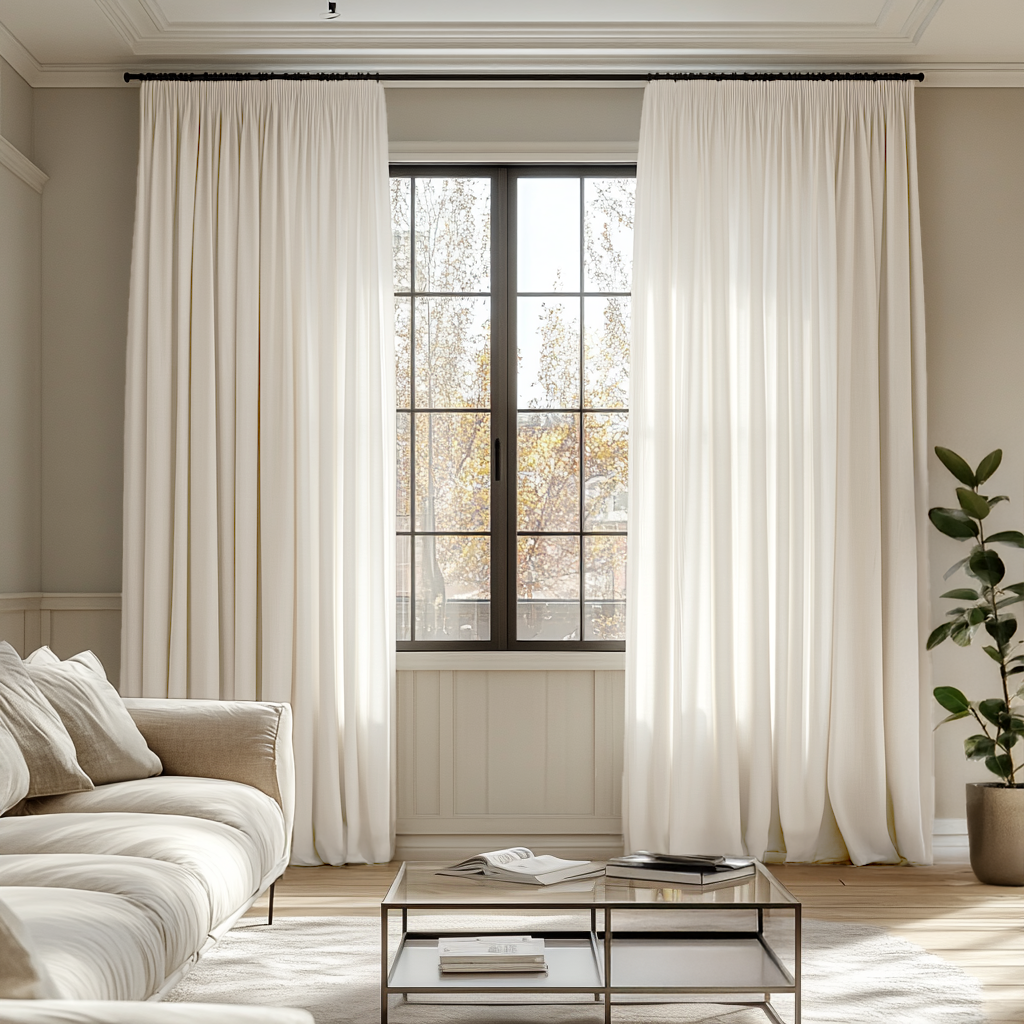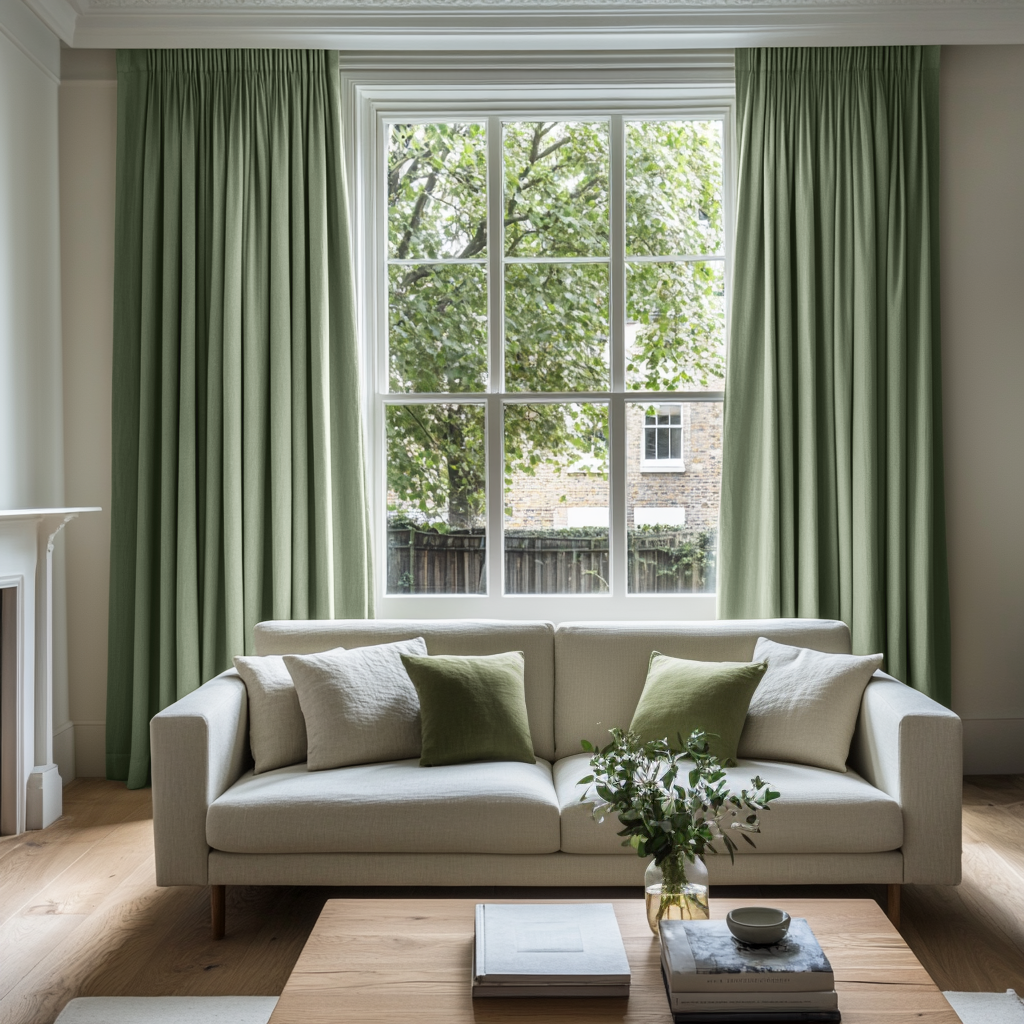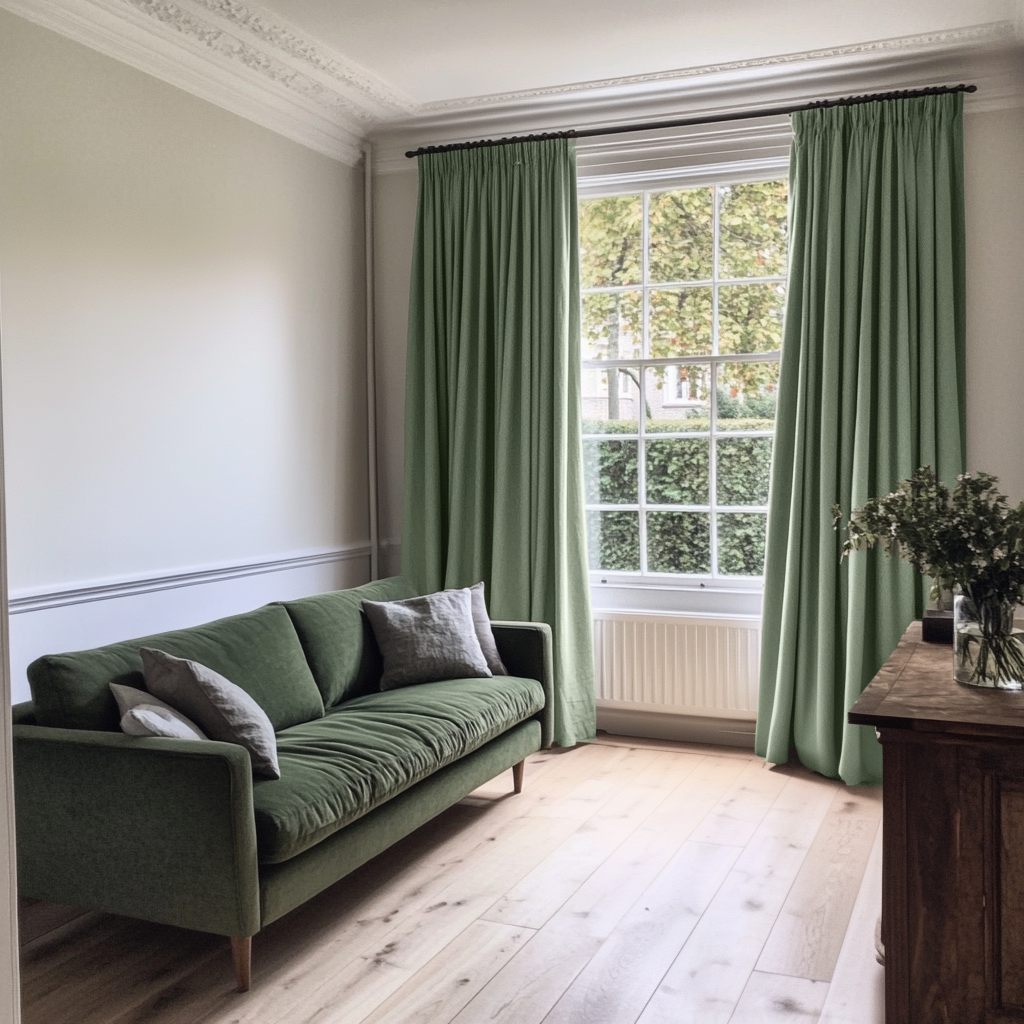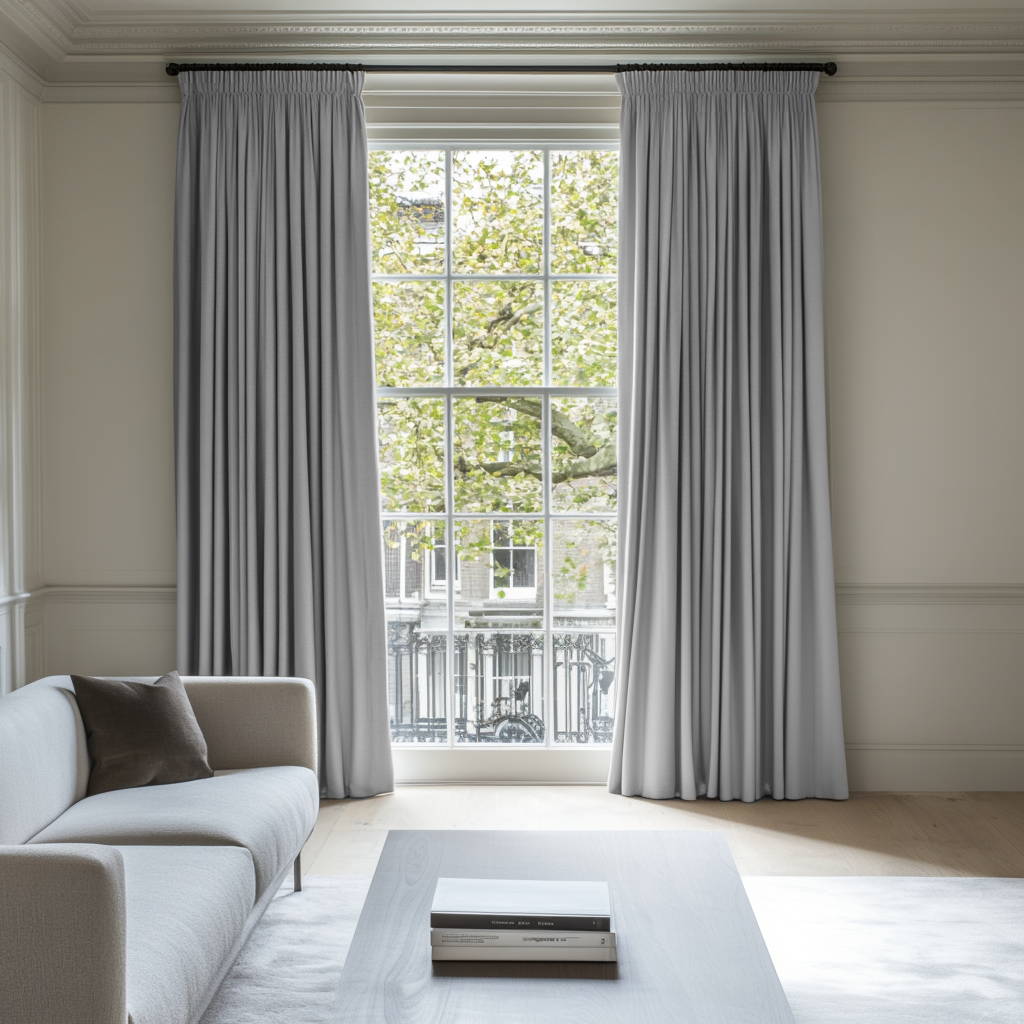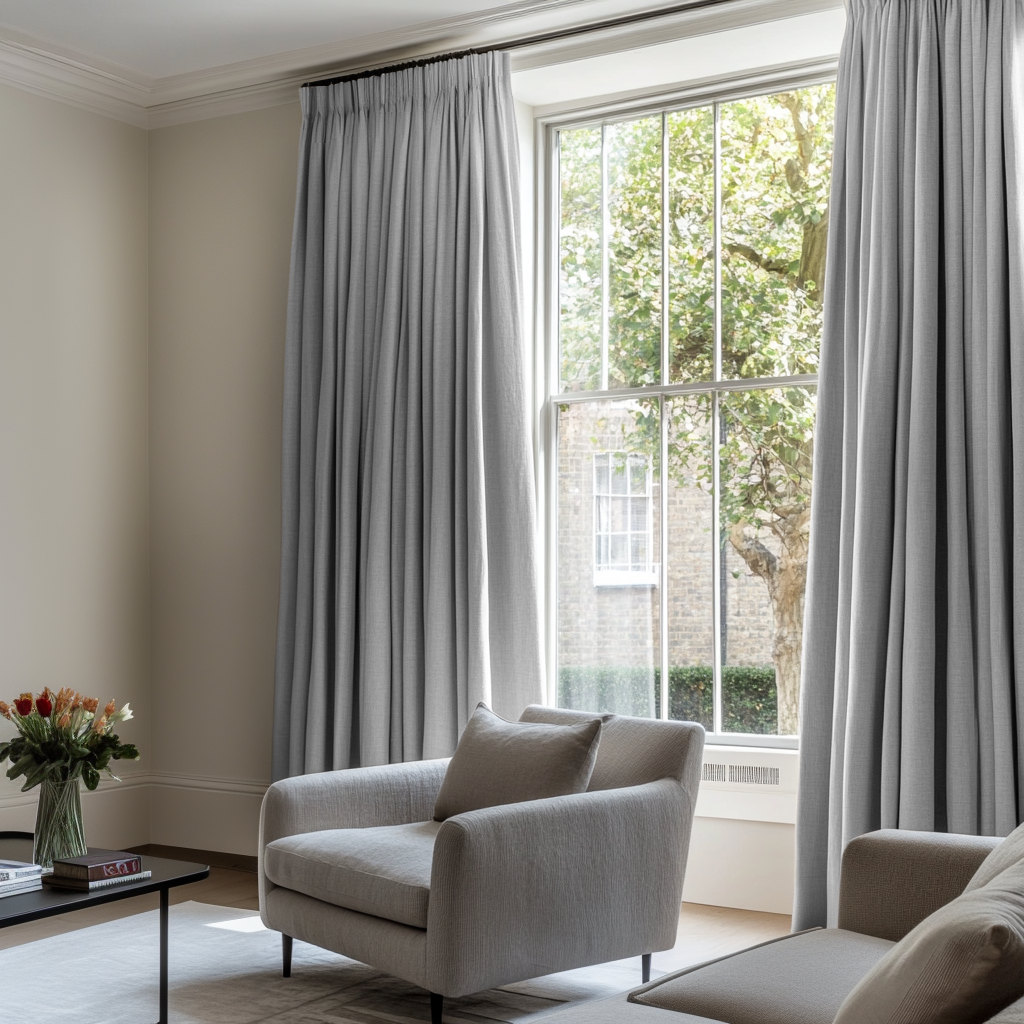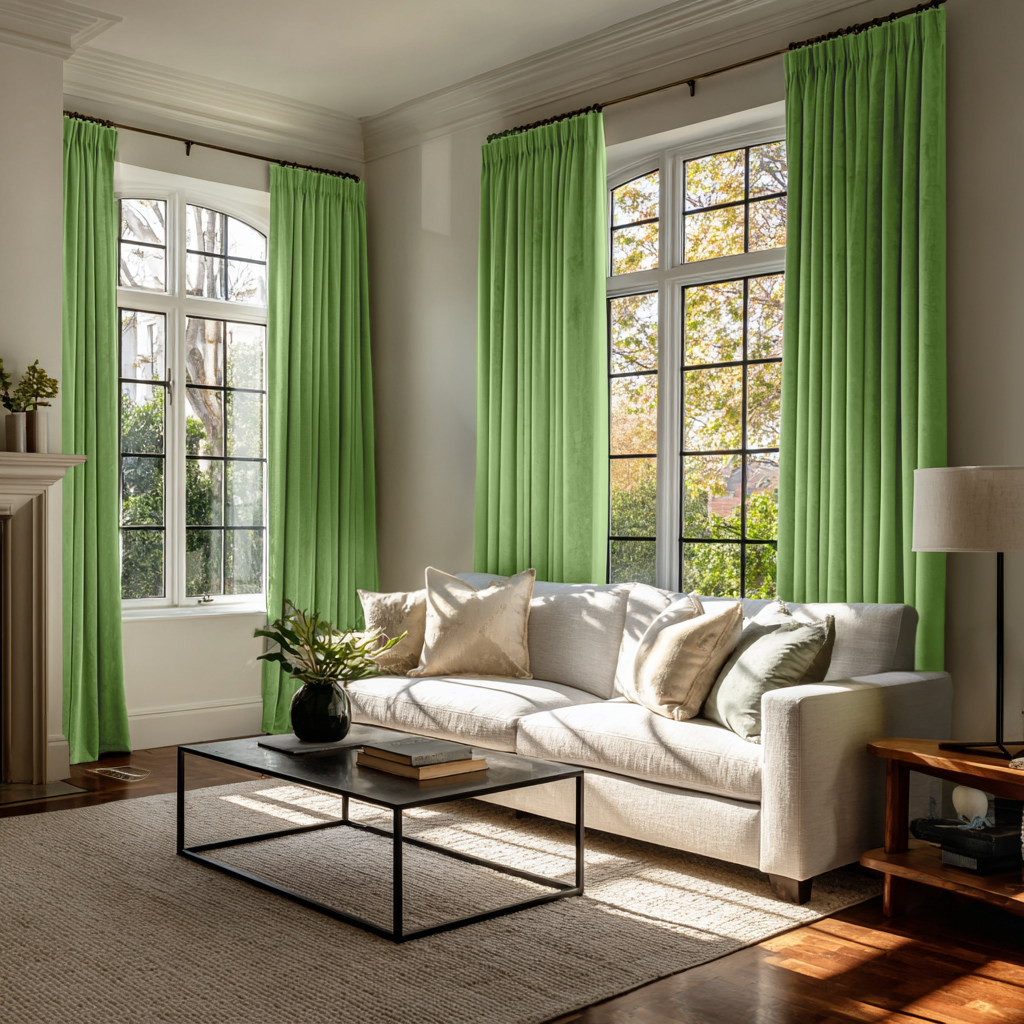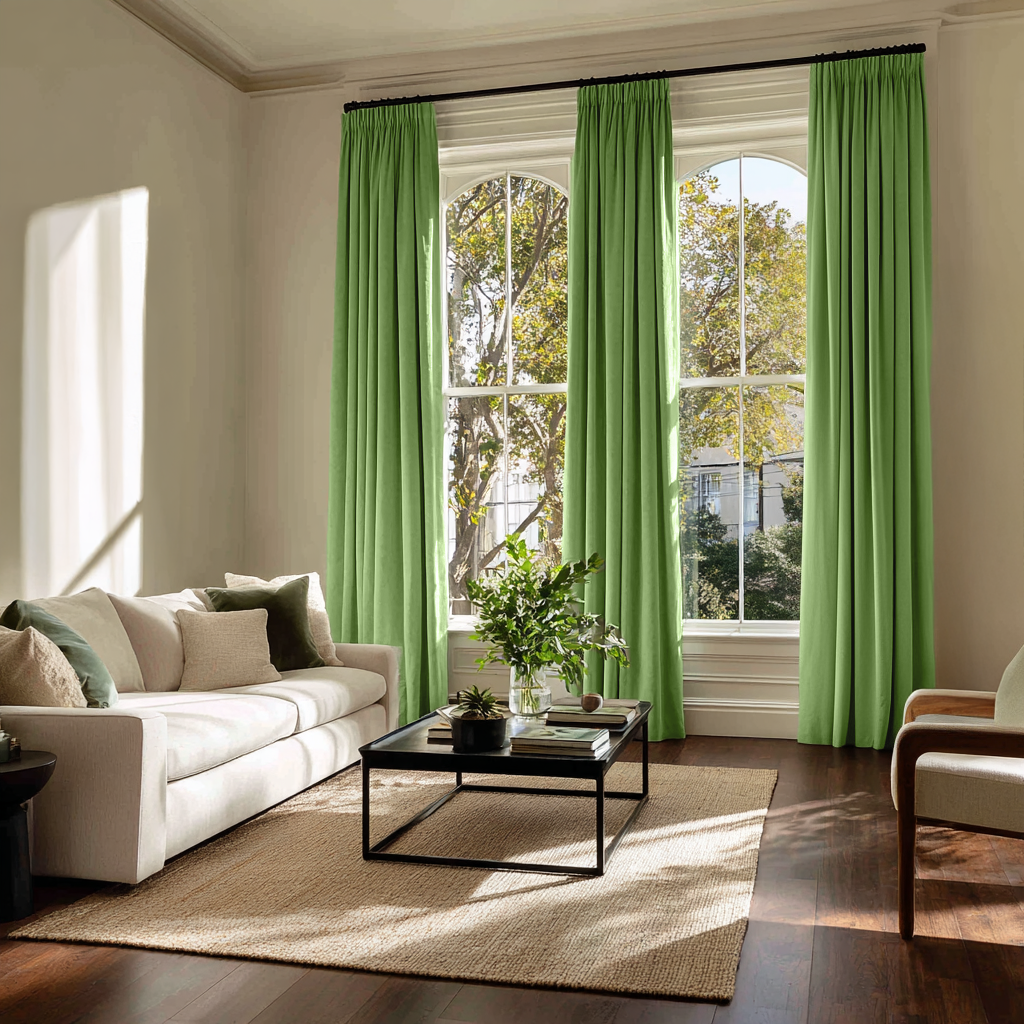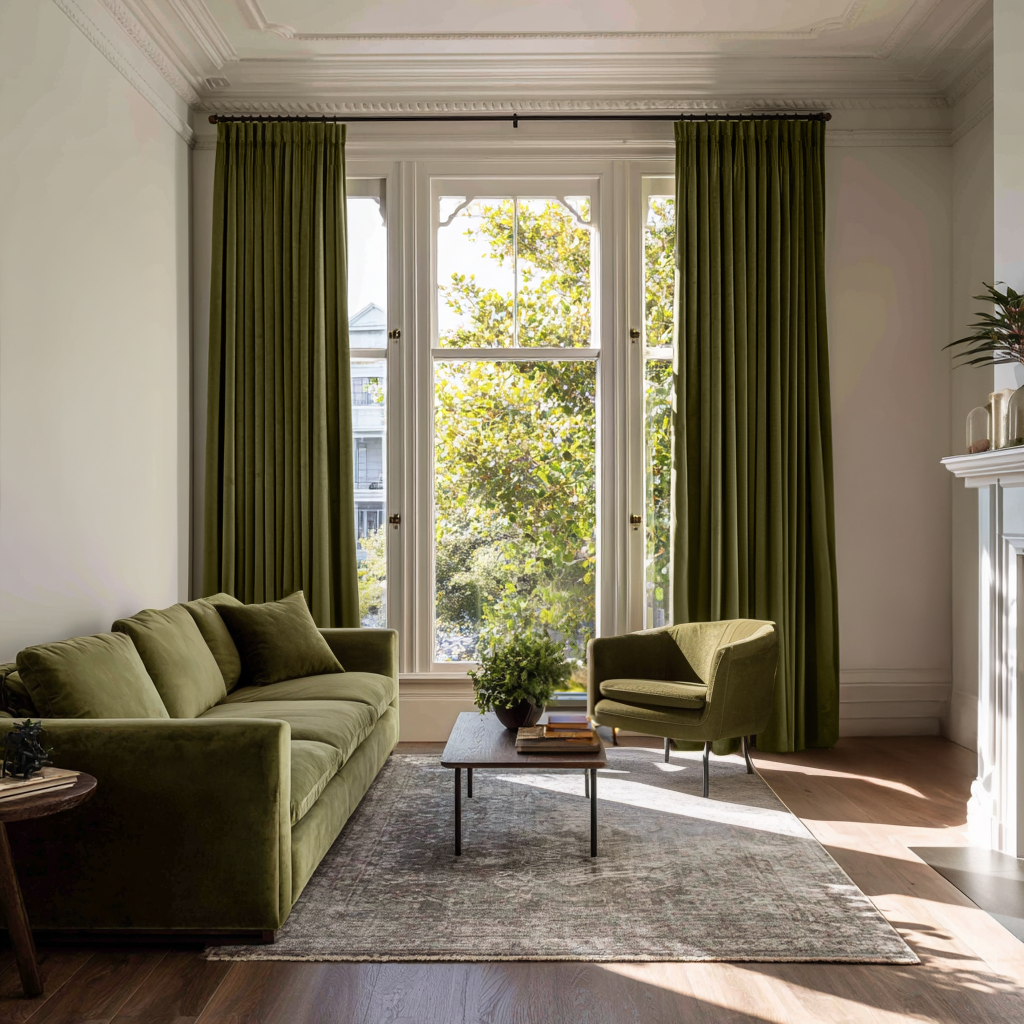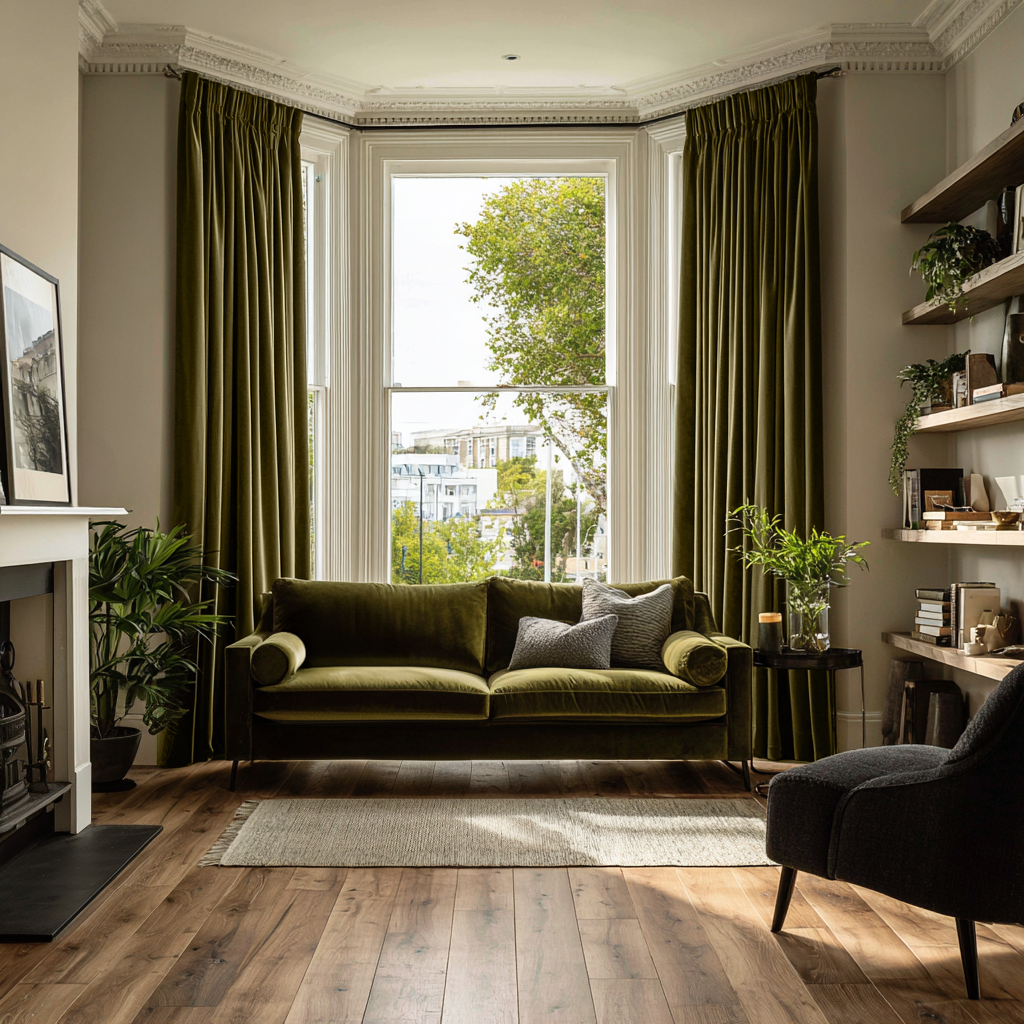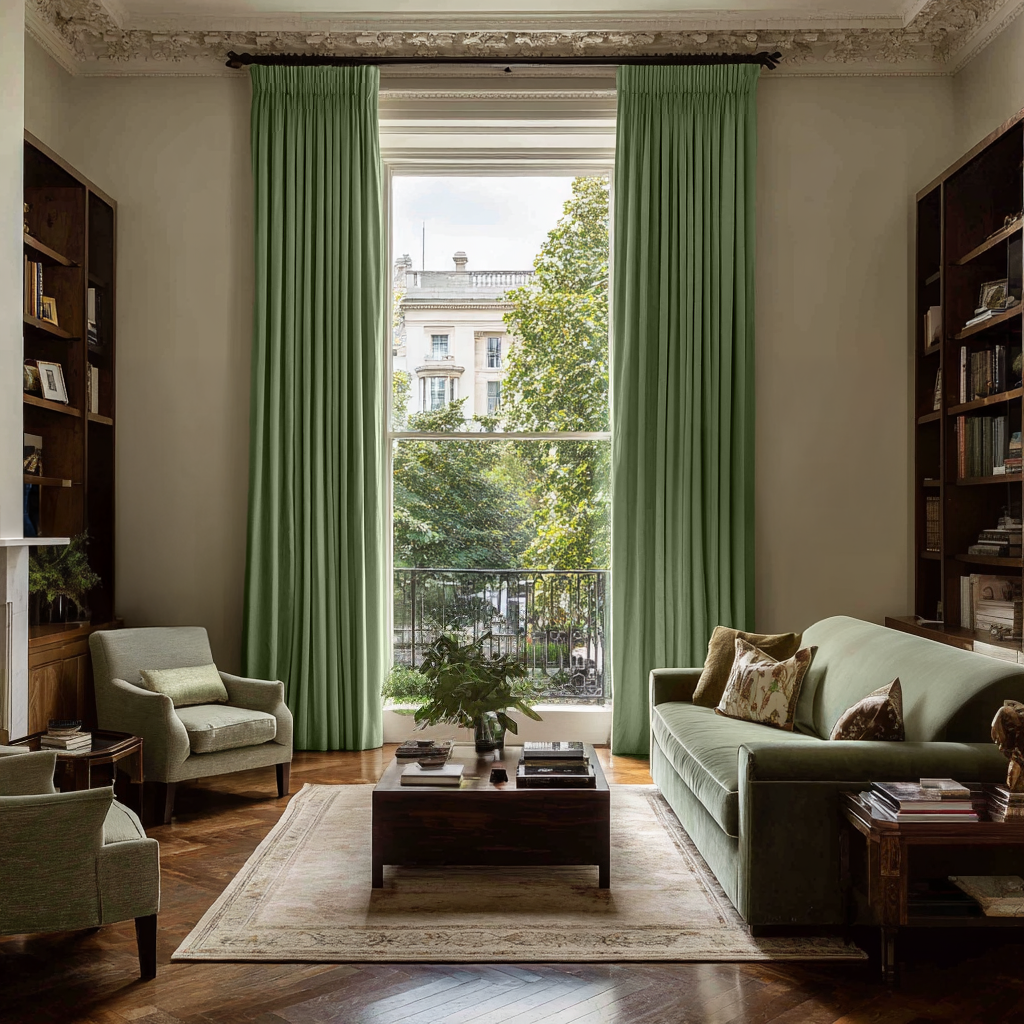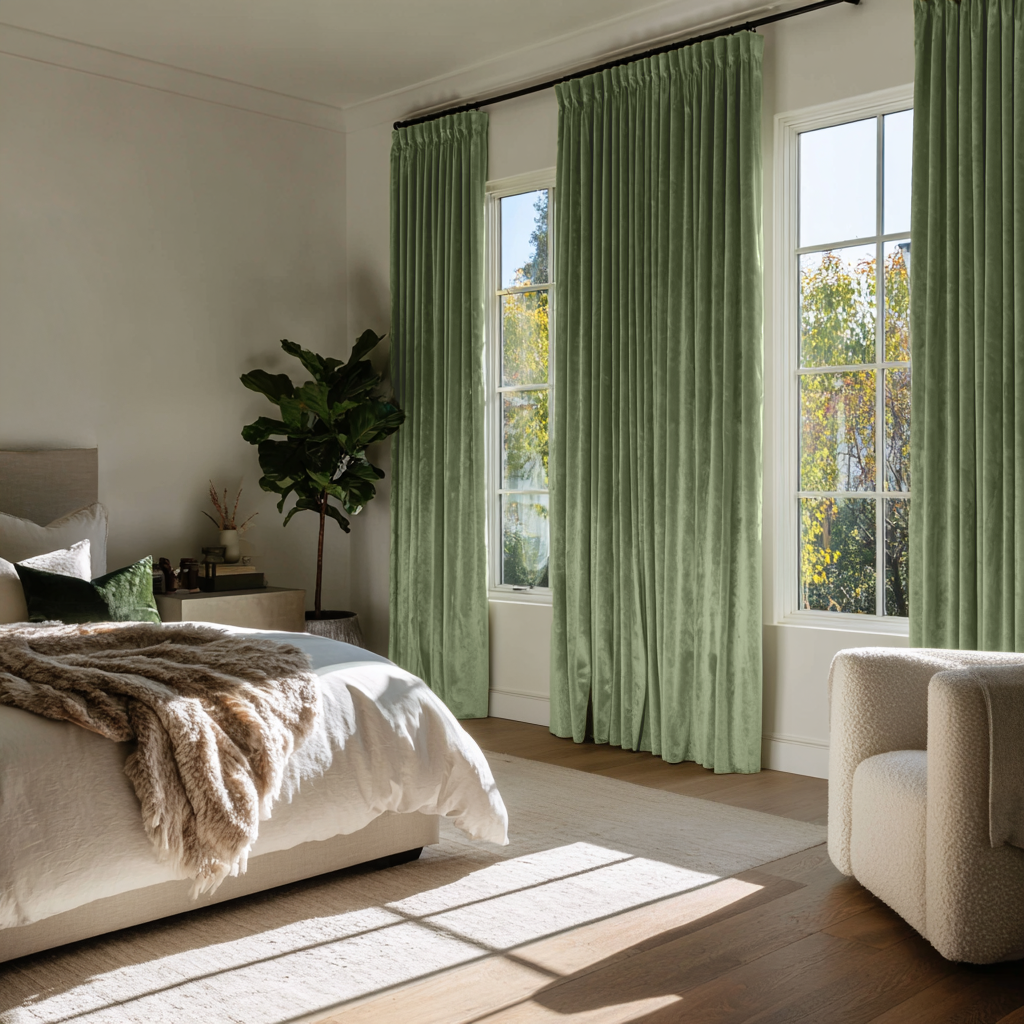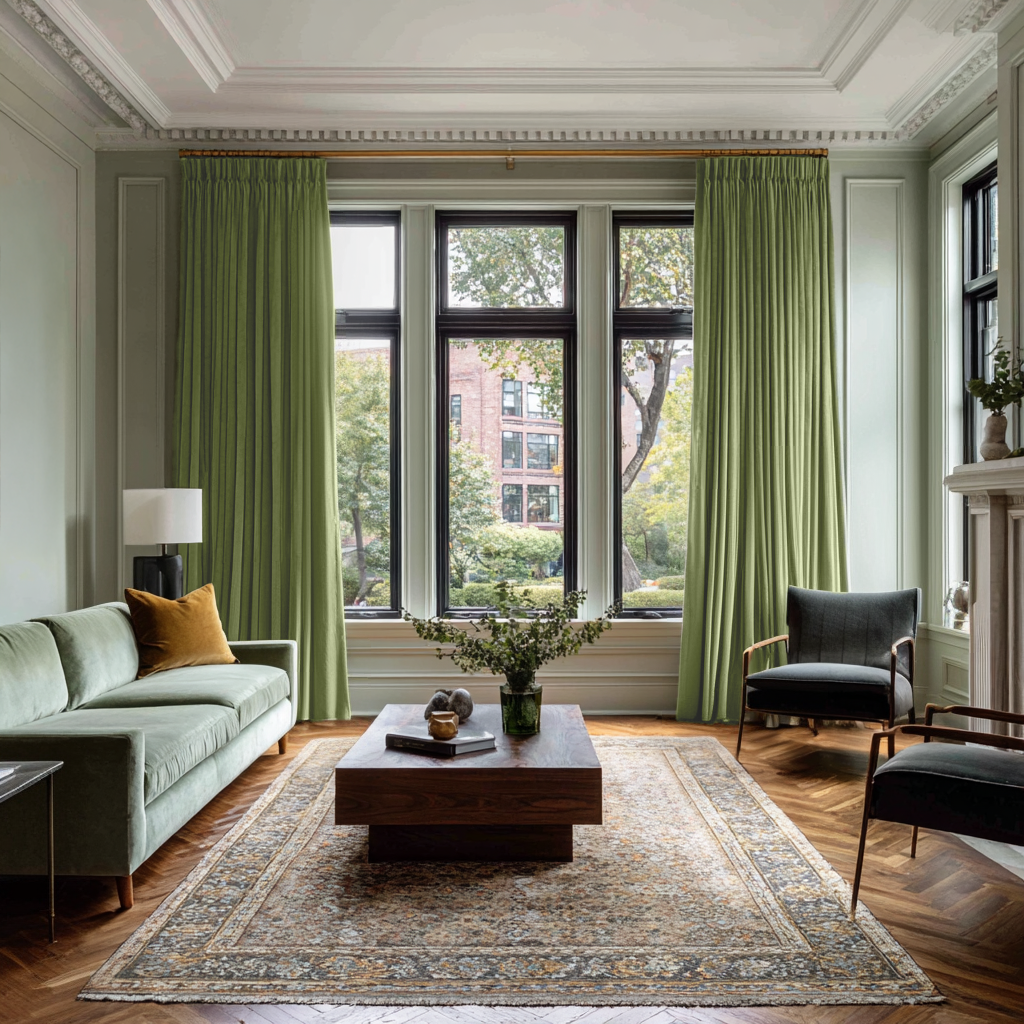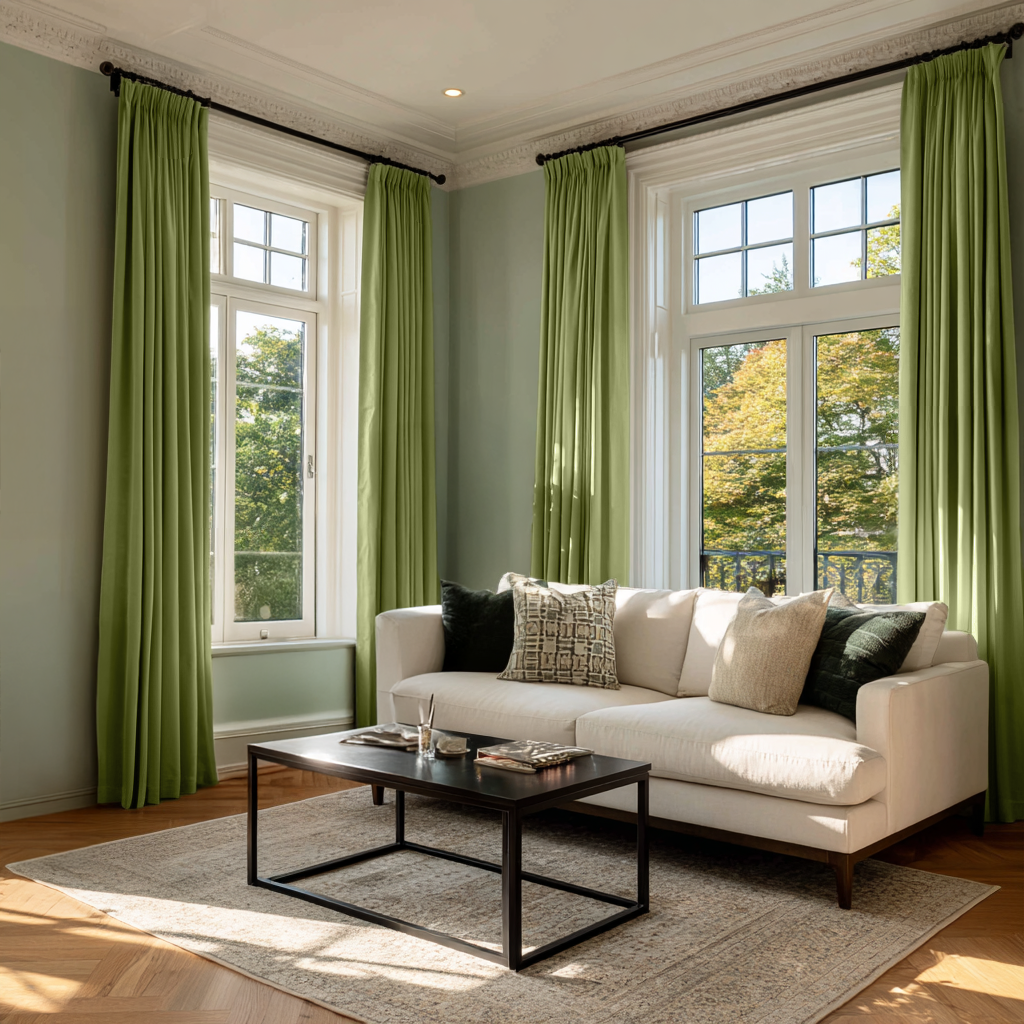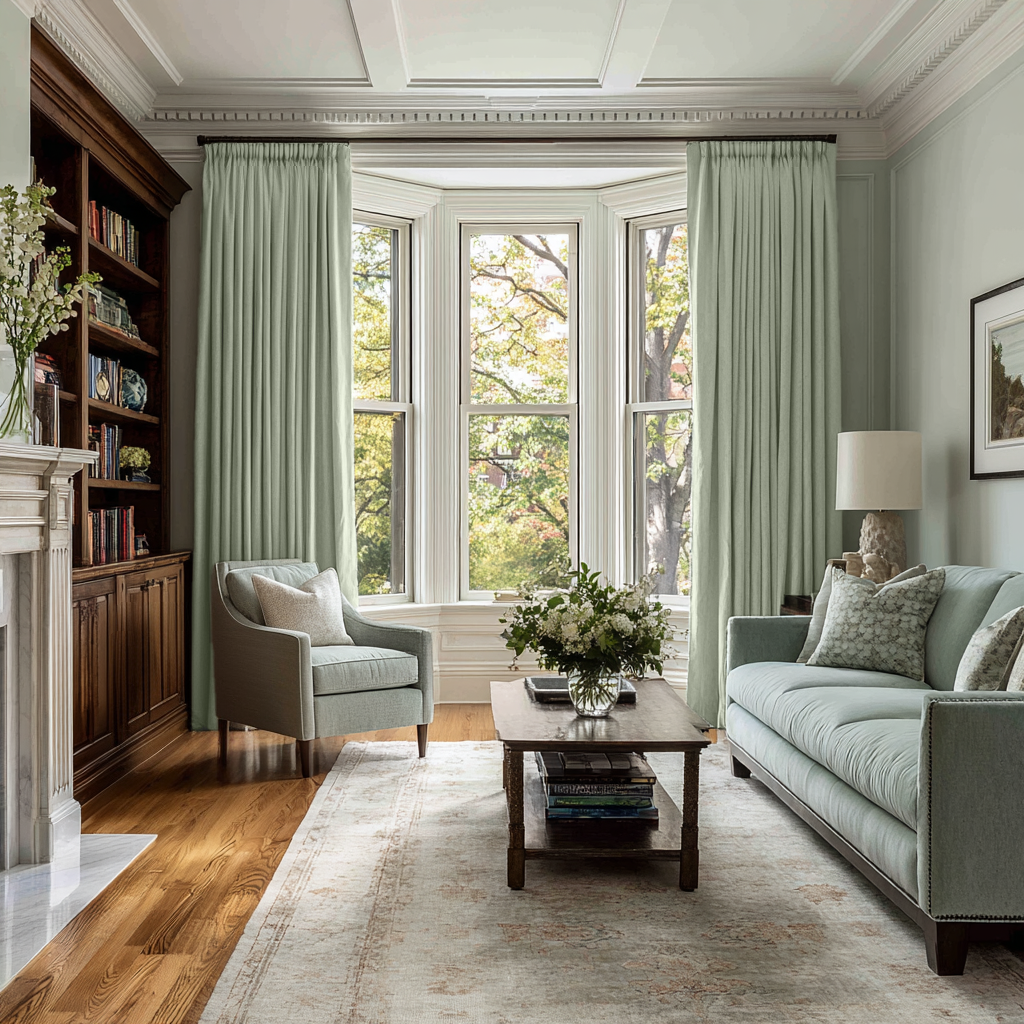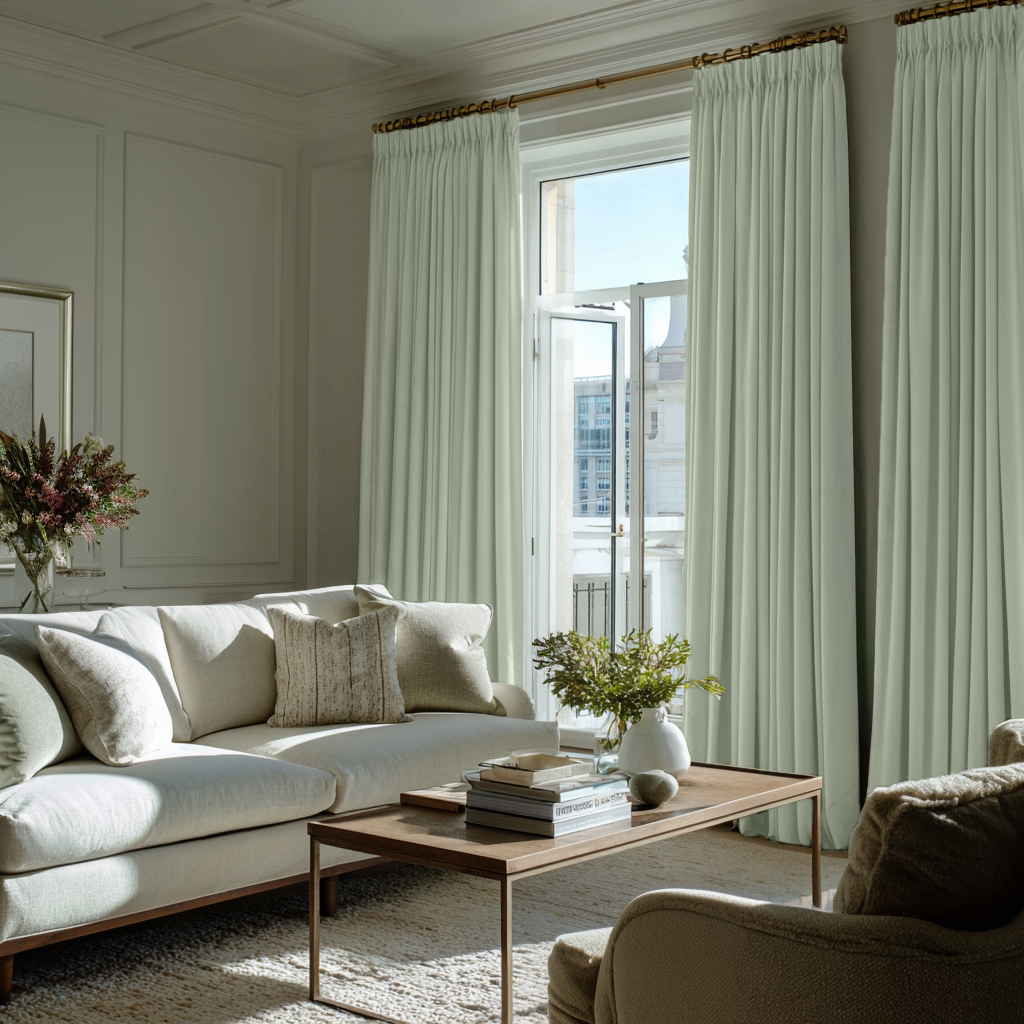What is a Pencil Pleat Curtain?
In Australian terminology, a pencil pleat curtain refers to a type of curtain heading or top treatment that features evenly spaced, narrow pleats along the top edge of the fabric. These pleats resemble the shape of a row of pencils laid side by side, hence the name "pencil pleat." But if you are wondering what are the right curtains for you, you are in the right place. Are you ready? Let´s go!
Here's an explanation of what a pencil pleat curtain is and its characteristics:
- Pleat Style: Pencil pleat curtains are characterized by tightly gathered fabric at the top, with small, evenly spaced pleats running horizontally across the width of the curtain panel. The pleats are typically created by gathering the fabric and securing it with quality curtain hooks or rings that match.
- Adjustable Fullness: One of the advantages of pencil pleat curtains is their adjustable fullness. The amount of fabric gathered into the pleats can be adjusted to achieve different levels of fullness, from a more tailored look with minimal gathering to a fuller, more traditional appearance with deeper pleats. The entire range is covered and adjustable to suit any room.
- Versatile Design: Pencil pleat curtains are versatile and can complement a variety of interior design styles, from traditional to contemporary with many different fabrics and colours to choose from. They are suitable for use in any room, including bedrooms, living rooms, dining rooms, and other areas of the home that might require certain light control and/or thermal insulation by utilizing blockout curtains equipped to shield against the sun's rays.
- Compatibility with Tracks and Poles: Pencil pleat curtains can be installed using either a curtain track or a curtain pole, offering flexibility in installation options. They are compatible with a range of hardware, allowing homeowners to make the right choice in the middle of all the options for their window treatment needs.
- Ease of Maintenance: Pencil pleat curtains are relatively easy to maintain. When it comes to cleaning, they can be machine washed or dry cleaned, depending on the curtain fabric, and may require occasional ironing to maintain the crisp appearance of the pleats.
Overall, pencil pleat curtains are a popular choice for many Australian households due to their classic designs, versatility, and adjustable fullness, making them a timeless and practical window treatment option, perfect to refresh the looks of your home no matter the style or colours of your room.
What is the Difference Between Pinch Pleat and Pencil Pleat Curtains?
In Australian terminology, pencil and pinch pleat curtains are two distinct styles of curtain headings or top treatments, each characterized by a different method of pleating the fabric at the top. Here's an explanation of the differences between pinch pleated and pencil pleated curtains:
Pleat Style:
- Pinch Pleat Curtains: these feature evenly spaced, sewn-in pleats that are pinched together at the top, creating a structured and tailored appearance. These pleats are typically formed by pinching and sewing folds of fabric together at regular intervals across the width of the panels. Pinch pleats can be double pinch pleats (two pleats pinched together) or triple pinch pleats (three pleats pinched together), depending on the preferred fullness and style.
- Pencil Pleat Curtains: Pencil pleat curtains, on the other hand, have tightly gathered fabric at the top with small, narrow pleats running horizontally across the width of the curtain panel. These pleats resemble the shape of a row of pencils laid side by side. Pencil pleats are created by gathering the fabric and securing it with hooks or rings. Pencil pleat curtains offer adjustable fullness. Opt for this type to achieve different levels of gather and fullness by adjusting the amount of fabric gathered into the pleats.
Appearance:
- Pinch Pleat Curtains: this type of window coverings have a more formal and structured appearance due to the evenly spaced, sewn-in pleats that create defined folds in the fabric. Opt for this style if you prefer a more conventional or formal decoration setting.
- Pencil Pleat Curtains: Pencil pleat curtains have a softer and more casual appearance compared to pinch pleat curtains. The narrow, horizontal pleats create a gathered effect that adds texture and dimension to the curtain panel. Pencil pleat curtains are versatile and can complement a range of styles, from traditional to contemporary.
- Installation and Hardware:
- Pinch Pleat Curtains: you can hang them using tracks or curtain rods with rings or hooks that attach to the pleats. The sewn-in pleats provide a sturdy attachment point for the curtain hardware when you need to hang the new pencil pleat curtains.
- Pencil Pleat Curtains: Pencil pleat curtains can be hung using either curtain tracks or rods with rings or hooks. The gathered fabric at the top of the curtain panel allows for flexibility in installation and adjustable fullness when you hang the pencil pleat curtains.
Overall, the main differences between pinch pleated and pencil pleated curtains lie in their pleat styles, appearance, and suitability for different decorations settings. Pinch pleat curtains offer a more formal and structured look, while pencil pleat curtains have a softer and more casual appearance with adjustable fullness. Both styles have their own unique aesthetic and can be chosen based on personal fabric and colours preference and the desired ideas for the look of the space.
Are Pencil Pleat Curtains Old Fashioned?
In Australia, whether pencil pleat curtains are considered old-fashioned can vary depending on individual tastes, current design trends, and the overall aesthetic of the space. While pencil pleat curtains have been a popular choice for many years and are often associated with more traditional decoration styles, they can still be used in modern and contemporary settings with the right styling and context combining them with amazing options like sheer pencil pleat curtains.
Here are some factors to consider when determining if pencil pleat curtains are old-fashioned:
- Design Context: Pencil pleat curtains may be perceived as old-fashioned in certain design contexts, particularly if they are paired with classical furnishings, patterns, or decor elements. However, when styled in a more contemporary or eclectic manner, pencil pleat curtains can contribute to a fresh and updated look by using textured fabrics or different patterns.
- Fabric and Color Choice: The fabrics and colours of pencil pleat curtains can influence whether they appear old-fashioned or more up-to-date. They offer a huge range of options. Choosing contemporary fabrics such as linen blends or sheer voiles in neutral tones or bold colors can give pencil pleat curtains a more modern and stylish vibe.
- Styling and Accessories: The way pencil pleat curtains are styled and accessorized can also impact their overall aesthetic. Mixing them with current hardware, layering them with blinds or shades or sheer pencil pleat curtains, trying different colours or incorporating on-trend accessories can help to modernize their appearance making them suitable for a huge range of dimensions, from a small space or a huge room instinctively.
- Personal Preference: Ultimately, whether pencil pleat curtains are considered old-fashioned is subjective and depends on personal taste. Some individuals may appreciate the classic and timeless look of pencil pleat curtains, while others may prefer more contemporary window treatments. Consider that these can not only help with light regulation but temperature insulation as well.
- Trends and Influences: Design trends and influences can play a role in shaping perceptions of certain decor elements. Pencil pleat curtains may experience periods of popularity and resurgence in current design as new interpretations and styling approaches emerge. The whole range of styling ideas is influenced by trends so make sure to check them out.
In summary, while pencil pleat curtains may have traditional associations, they can still be used in modern and contemporary spaces with the right styling and context. By considering factors such as fabric choice, selection of colours, styling, and personal preferences, pencil pleat curtains can be incorporated into a wide range of design schemes, offering versatility and timeless appeal in Australian family homes.
Which is Better Eyelet or Pencil Pleat?
Deciding whether eyelet or pencil pleat curtains are better for your Australian home depends on various factors, including your personal preference, the style of your decor, and the functionality you require from your pencil pleat curtains. Here's a comparison between eyelet and pencil pleat curtains to help you make an informed choice:
Eyelet Curtains:
- Modern and Sleek Look: Eyelet curtains have a contemporary and streamlined appearance due to the metal rings (eyelets) that are punched into the fabric at the top. This design creates clean, straight folds when the curtains are installed.
- Easy Installation: Quality eyelet curtains are easy to install as they slide onto a rod through the eyelets. This makes them a convenient option for homeowners who prefer a hassle-free setup process.
- Smooth Operation: Since eyelet curtains slide smoothly along the rods, they are easy to open and close. This makes them ideal for frequently used windows or doors when you need to block light, making them ideal for blockout curtains so you can control light and thermal insulation without any problems using these blinds. Ease of operation is important for other parameters beside light control, like noise reduction as well.
- Limited Adjustability: Eyelet curtains have a limited range of adjustability in terms of fullness. The width of the fabric is fixed by the size of the curtain rod, so there's less flexibility to adjust the amount of gather in the curtains.
Pencil Pleat Curtains:
- Versatile Style: Pencil pleat curtains have a versatile range of designs that suit various decor schemes, from traditional to modern. The narrow pleats at the top of the fabric offer a tailored and classic look.
- Adjustable Fullness: quality pencil pleat curtains provide adjustable fullness, allowing you to customize the gather of the fabric by adjusting the hooks or rings along the pleats. This gives you more control over the volume and appearance of the pencil pleat curtains and also other functional aspects like light control.
- Compatibility with Tracks: Pencil pleat curtains or drapes can be hung using either tracks or rods, offering flexibility in installation options. They are compatible with a wide range of hardware and rods.
- Traditional Appeal: Pencil pleat curtains and drapes have a timeless appeal that can complement both traditional and contemporary decor styles. They are often preferred for their traditional look and tailored finish that comes from the quality fabrics used in these.
Ultimately, the choice between eyelet and pencil pleat curtains or drapes comes down to personal preference, the style of your decor, and the level of adjustability you desire in the looks of your family house. Consider the aesthetic you want to achieve, the functionality you need from your drapes , and how each option fits within your overall design scheme. Ask the expert in your shop for advice to see which of the two designs suit you best and tips on how to execute the idea cleanly.
Do You Need Curtain Hooks for Pencil Pleat Curtains?
Yes, you typically need curtain hooks for pencil pleat curtains. Pencil pleat curtains are designed with a header tape sewn along the top edge, which contains several pockets or slots for inserting hooks. These hooks are then attached to rings or gliders that hang from a track or pole.
Here's why hooks are necessary for pencil pleat curtains:
- Securing the Fabric: Hooks are essential for securing the fabric of pencil pleat curtains in place. The hooks are inserted into the pockets of the header tape, ensuring that the pleats are held evenly across the width of the curtain panel.
- Creating Pleats: Hooks play a crucial role in creating the pleats that give pencil pleat curtains their distinctive look. By gathering and attaching the fabric to the hooks, the pleats are formed, adding texture and dimension to the curtain panel.
- Hanging the Curtains: Hooks allow pencil pleat curtains to be hung from curtain tracks or poles. Once the hooks are attached to the curtain tape, they can be suspended from curtain rings or gliders, which then slides along the track or pole for smooth opening and closing of the curtains.
- Adjusting Fullness: Hooks provide flexibility in adjusting the fullness of pencil pleat curtains. By moving the hooks along the pockets of the header tape, you can customize the amount of gather in the fabric to achieve the desired level of fullness.
Overall, hooks are an integral component of pencil pleat curtains, allowing for proper installation, pleat formation, and adjustment of fullness. When purchasing pencil pleat curtains, be sure to check with your local shop if hooks are included or if they need to be purchased separately to ensure smooth and hassle-free hanging. Make sure to mention if you need light control or noise reduction as well.
The number of layers of textile you need to shop for pencil pleat curtains depends on the desired fullness of window coverings and the width of your window or the track/pole you plan to hang them from. Here's a general guideline for determining the width of fabric you'll need:
- Single Fullness (1x): For a more tailored and minimal look, you can use a single width of fabric per curtain panel. This option is good for narrow windows or when you prefer a less gathered appearance.
- One and a Half Fullness (1.5x): Using one and a half widths of fabric per curtain panel provides a moderate level of fullness and is a common choice for standard-sized windows. This option creates a fuller look without excessive gather.
- Double Fullness (2x): Using double the width of fabric per curtain panel results in a luxurious and voluminous appearance with plenty of gather. This option is ideal for larger windows or when you desire a more opulent look.
To calculate the width of fabric needed:
- Measure the width of your window or the space you want to cover with the curtains.
- Determine the desired fullness factor (e.g., single, one and a half, or double fullness).
- Multiply the width of the window by the fullness factor to calculate the total width of fabric needed for one curtain panel.
- Divide the total width of fabric needed by the width you plan to use (usually around 137-150cm wide for standard curtain textile) to determine the number of widths required.
For example, if your window is 200cm wide and you want to achieve one and a half fullness using fabric that is 150cm wide:
200cm (window width) x 1.5 (fullness factor) = 300cm (total width of fabric needed for one curtain panel)
300cm ÷ 150cm (width of textile) = 2 widths needed per curtain panel
Keep in mind that these are general guidelines, and you may need to adjust based on your specific preferences and the characteristics of your window. Additionally, you'll need to consider seam allowances and any pattern matching requirements when cutting and sewing the curtain panels together. If you find this complicated, the experts in your local shop will be able to assist you with no issues.



